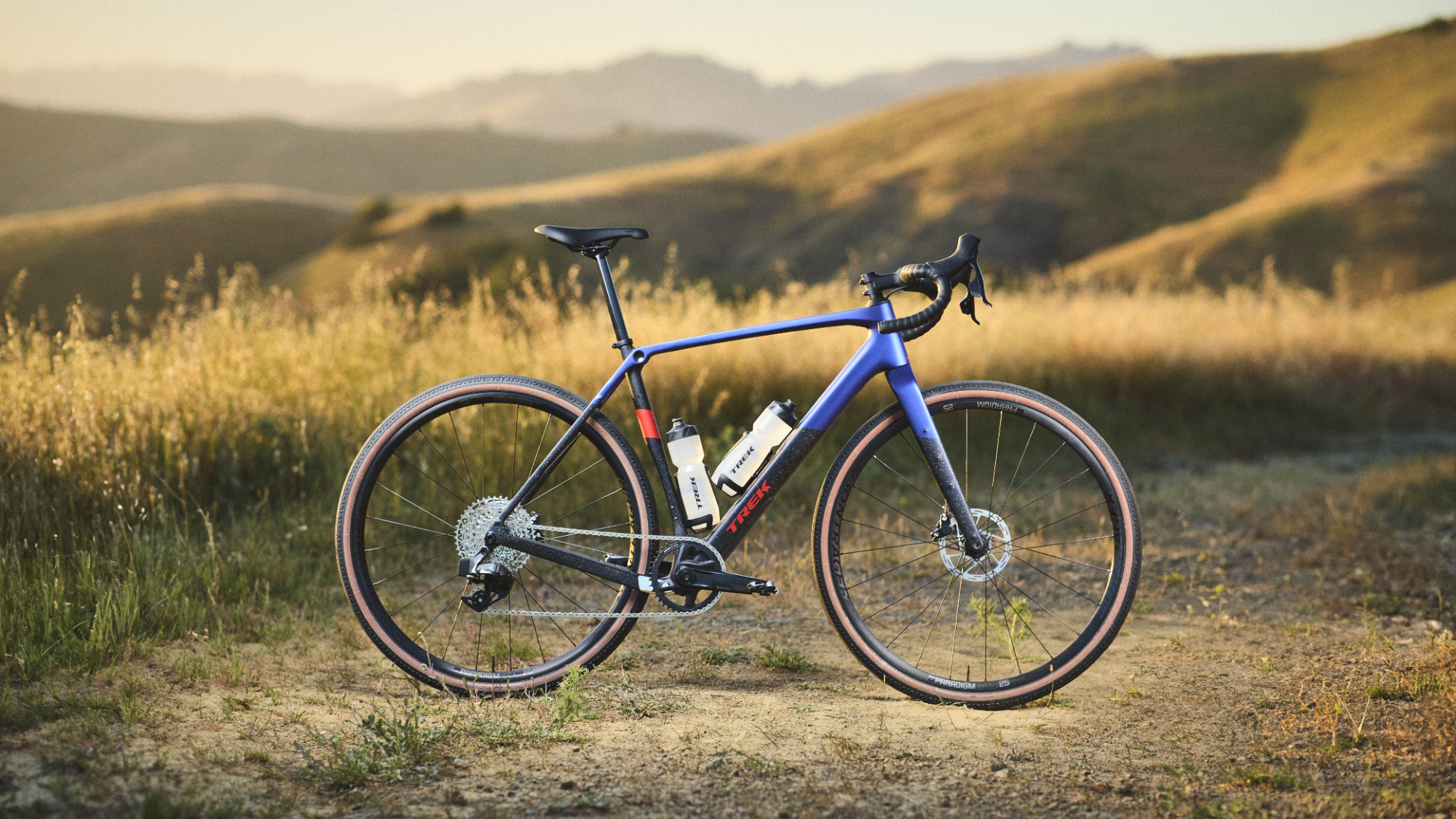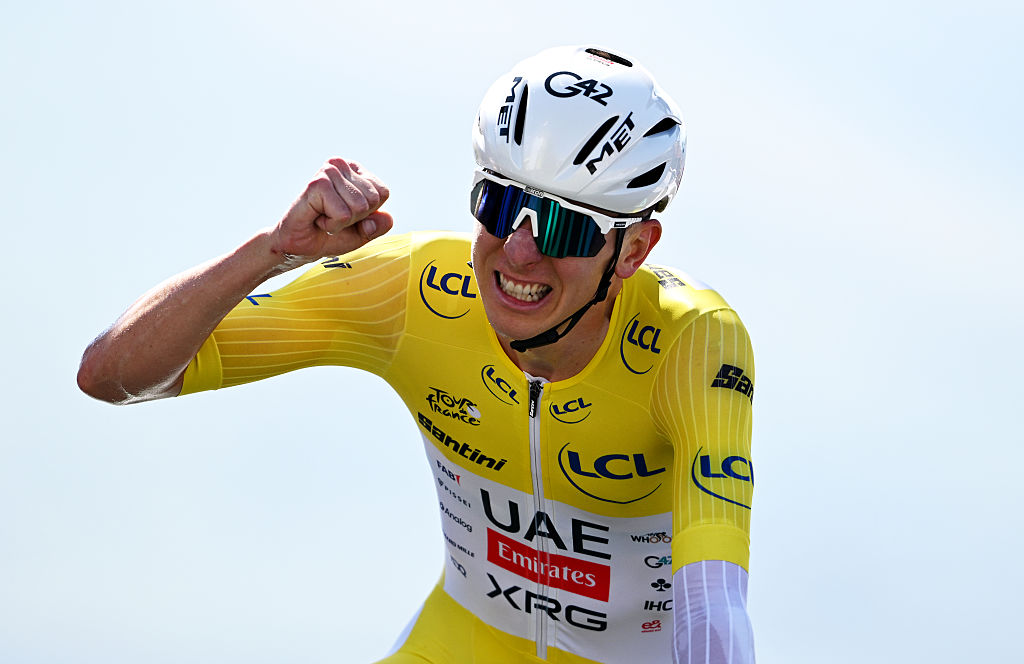Best gravel bikes 2025: Our pick of the best bikes for drop-bar off-road action
We've tested and reviewed over 25 of the best gravel bikes, covering all options from gravel racing to bikepacking adventures
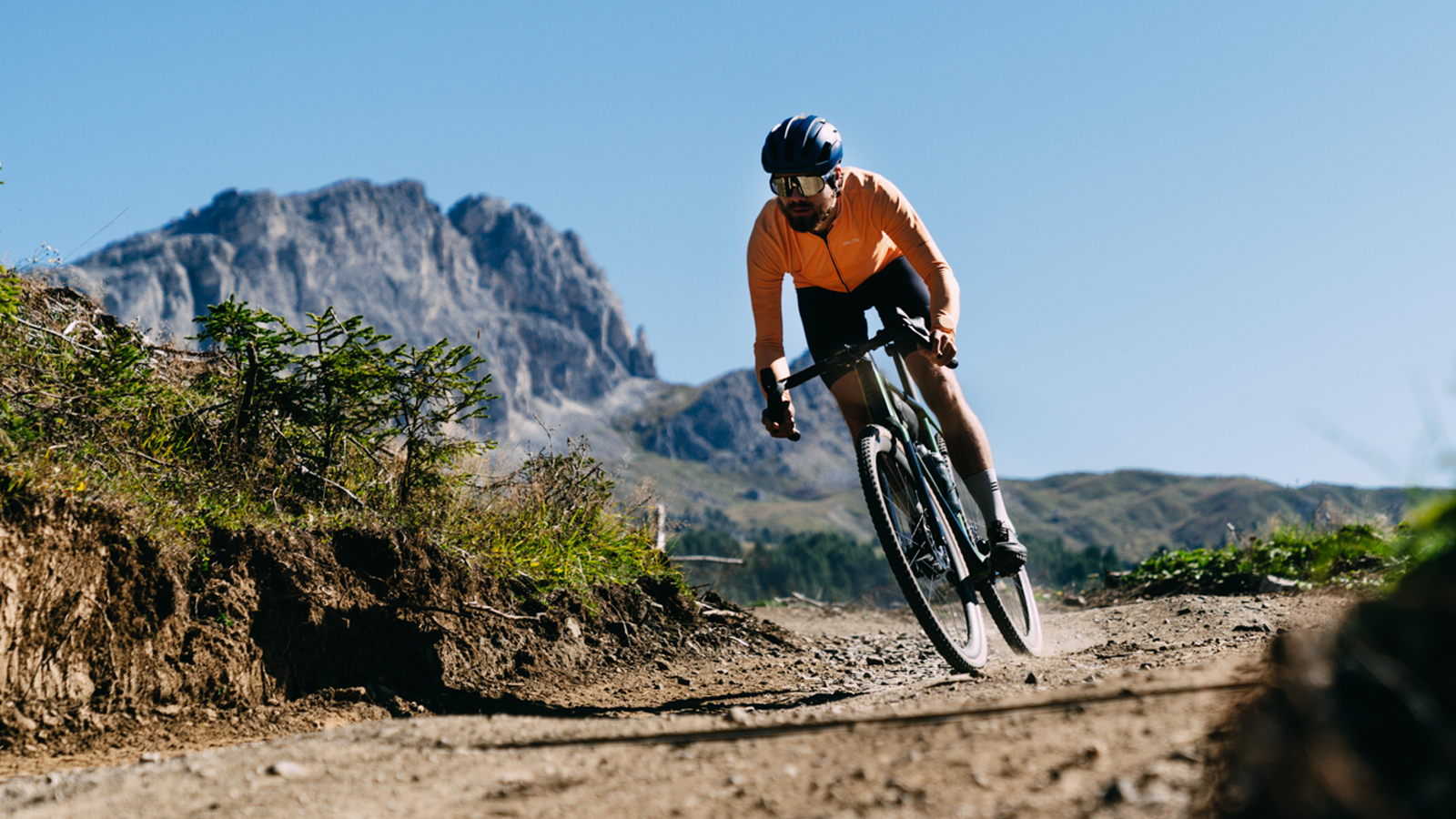
The best gravel bikes cover a wide range of riding, although they all share some key similarities. Big tyres, stable geometry and a wide gear range balance off-road capability with a good turn of speed on-road too.
Although many gravel bikes are generalists, the genre is becoming increasingly divided. The spectrum ranges from fast gravel race bikes, which bring road bike-like speed to smoother gravel tracks, to bikes that will let you load up and head off on multi-day off-grid adventures.
After extensive testing on gravel trails, singletrack and road, our top pick is the Canyon Grail CF SLX 8. That said, there are plenty more great options to choose from, and we have rounded up our pick of the best gravel bikes, no matter what type of gravel you subscribe to.
The gravel bikes covered in this guide can be ridden by men and women, however if you are looking for a women-specific geometry or components, then head over to our best women's gravel bike guide for more options.
We also have guides which cater to more affordable options, so you can go off-road for less. The best budget gravel bikes that offer durability and reliability without the high price tag, and the best entry-level gravel bikes feature our top picks for those new to gravel.
Read on for our pick of the best gravel bikes, or scroll down to the bottom of the page for our guide on different types of gravel bikes, gravel tech and how to choose the best gravel bike for you.
Quick list: Best gravel bikes
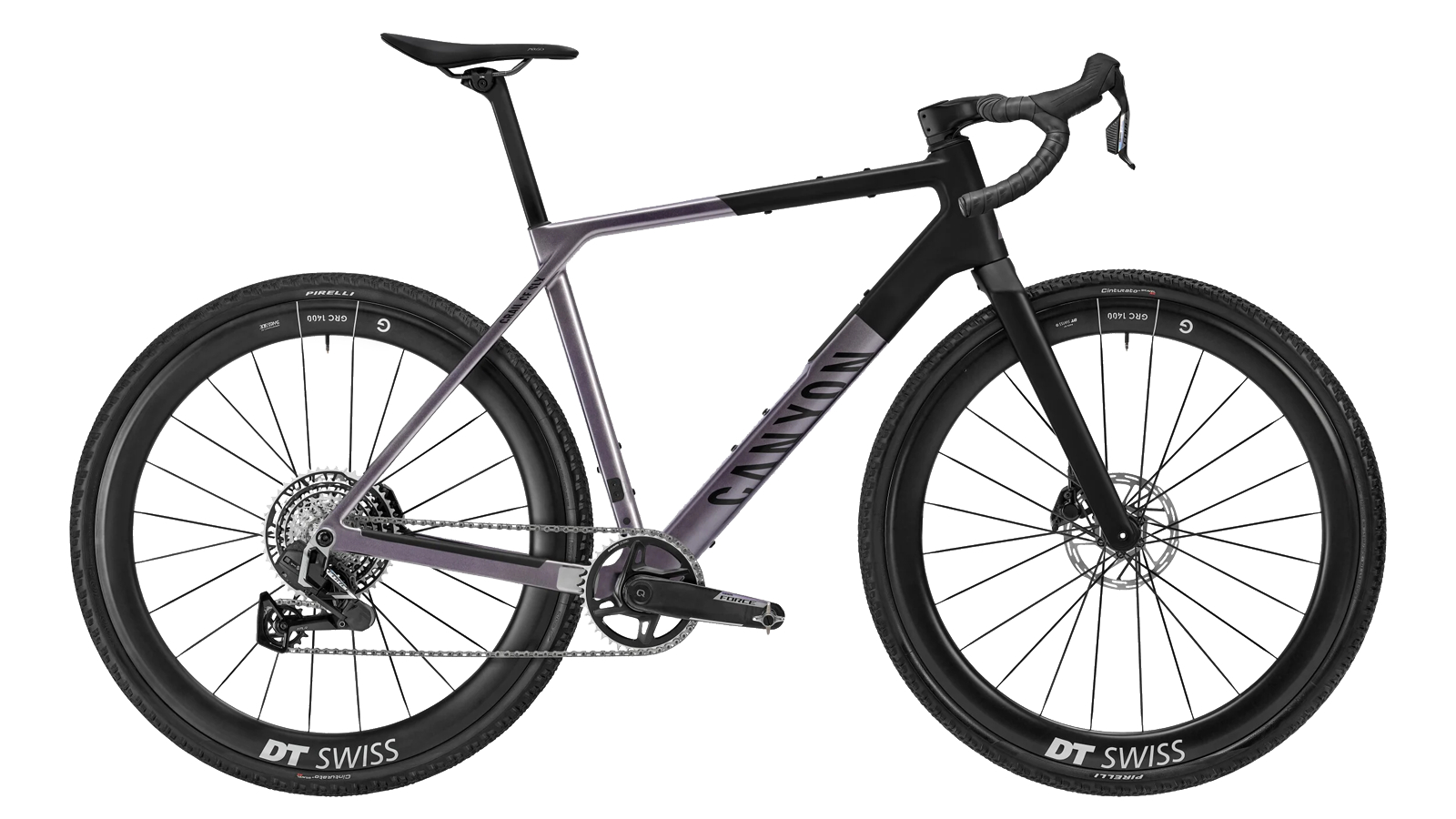
Canyon Grail is an ultra-fast race bike, however, the sorted geometry gives a standout ride whether you're racing or just having fun around your local woods
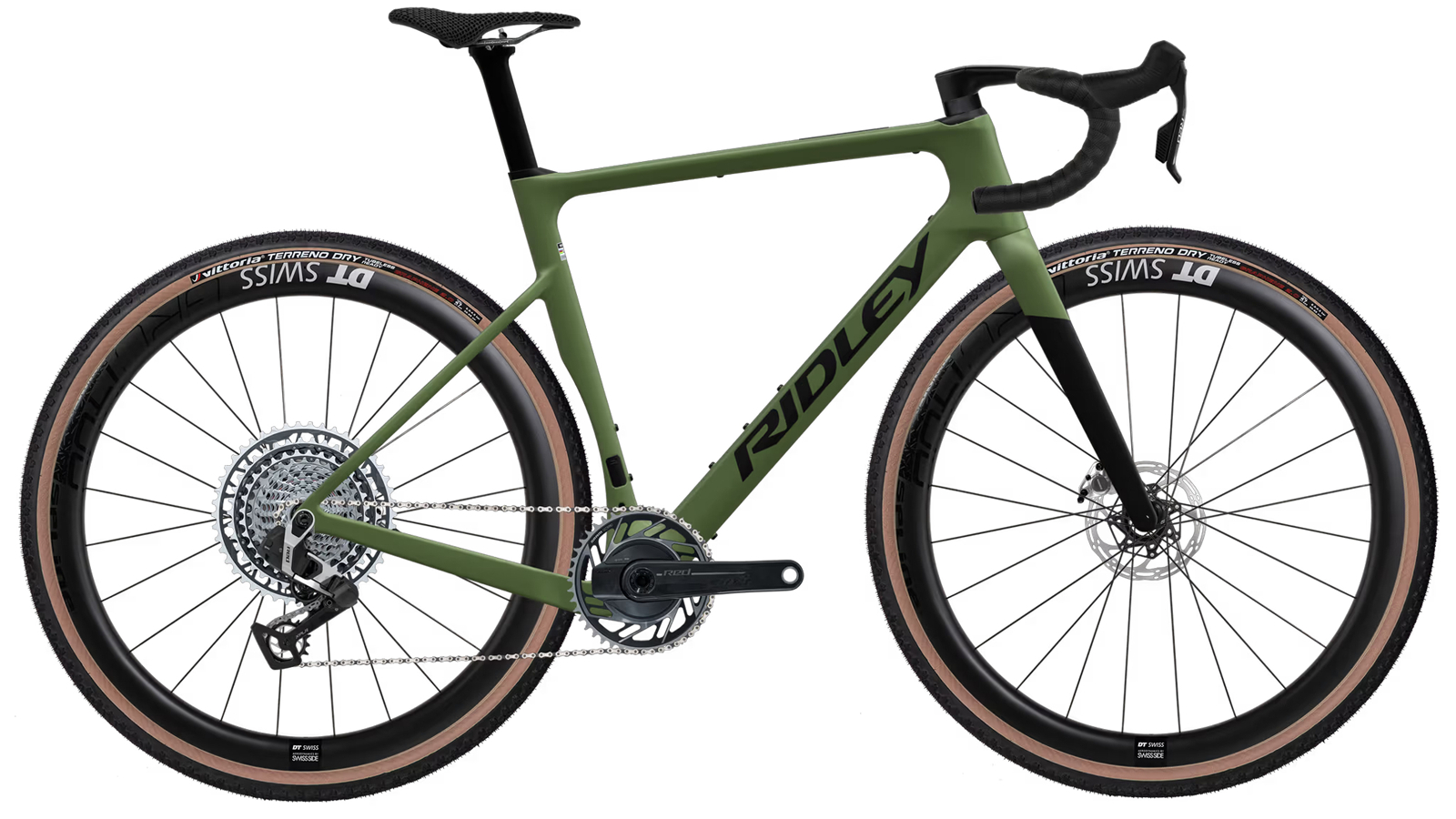
The Ridley ASTR RS combines racey geometry, big tyre clearance and aerodynamic optimisations, making it the blueprint for future gravel race bikes in our opinion.
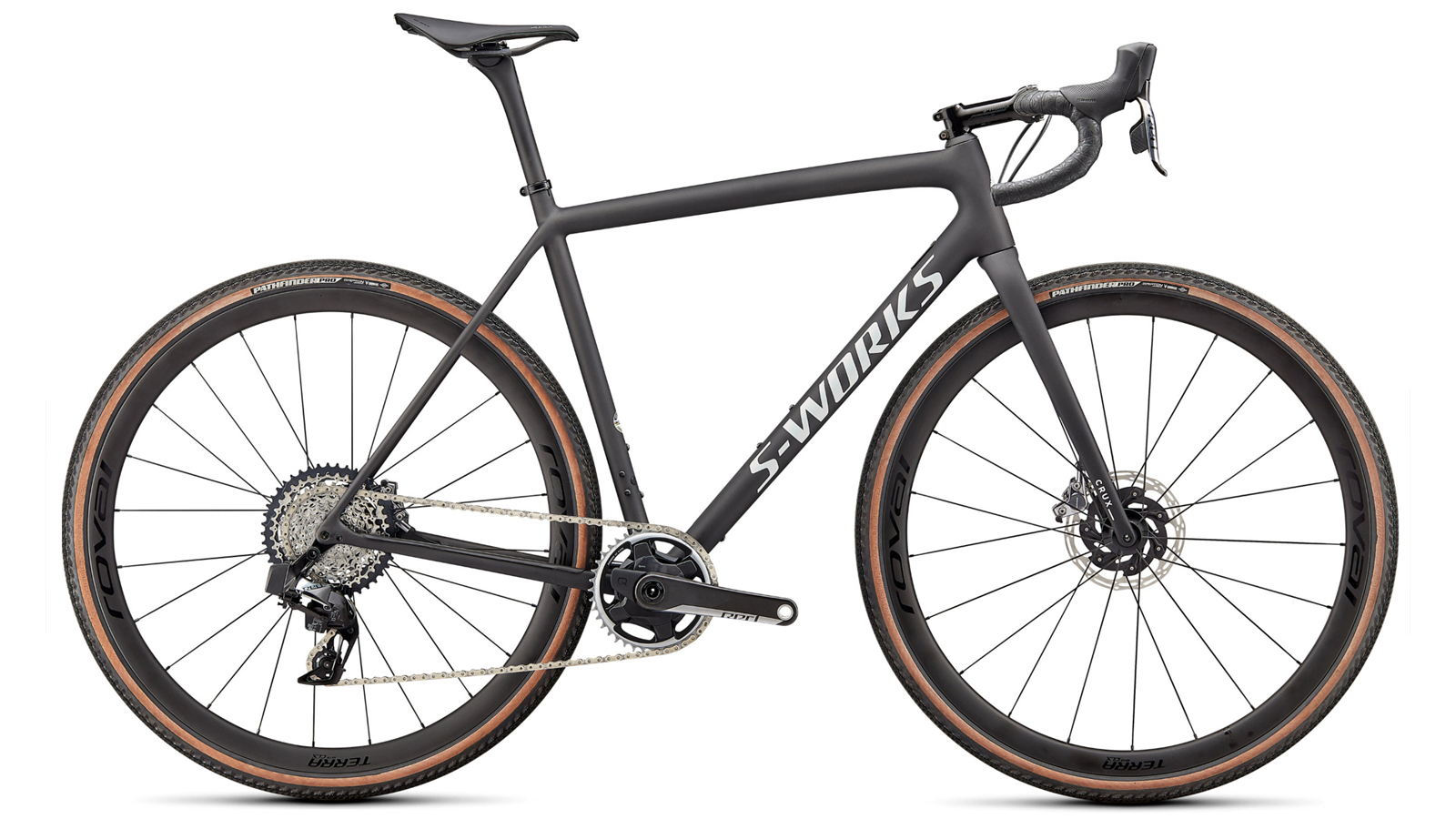
The SRAM-Red equipped S-Works Crux weighs in at 7.25kg. That's lower than many of the road bikes you'll see in the pro peloton, which for a gravel bike is incredible.
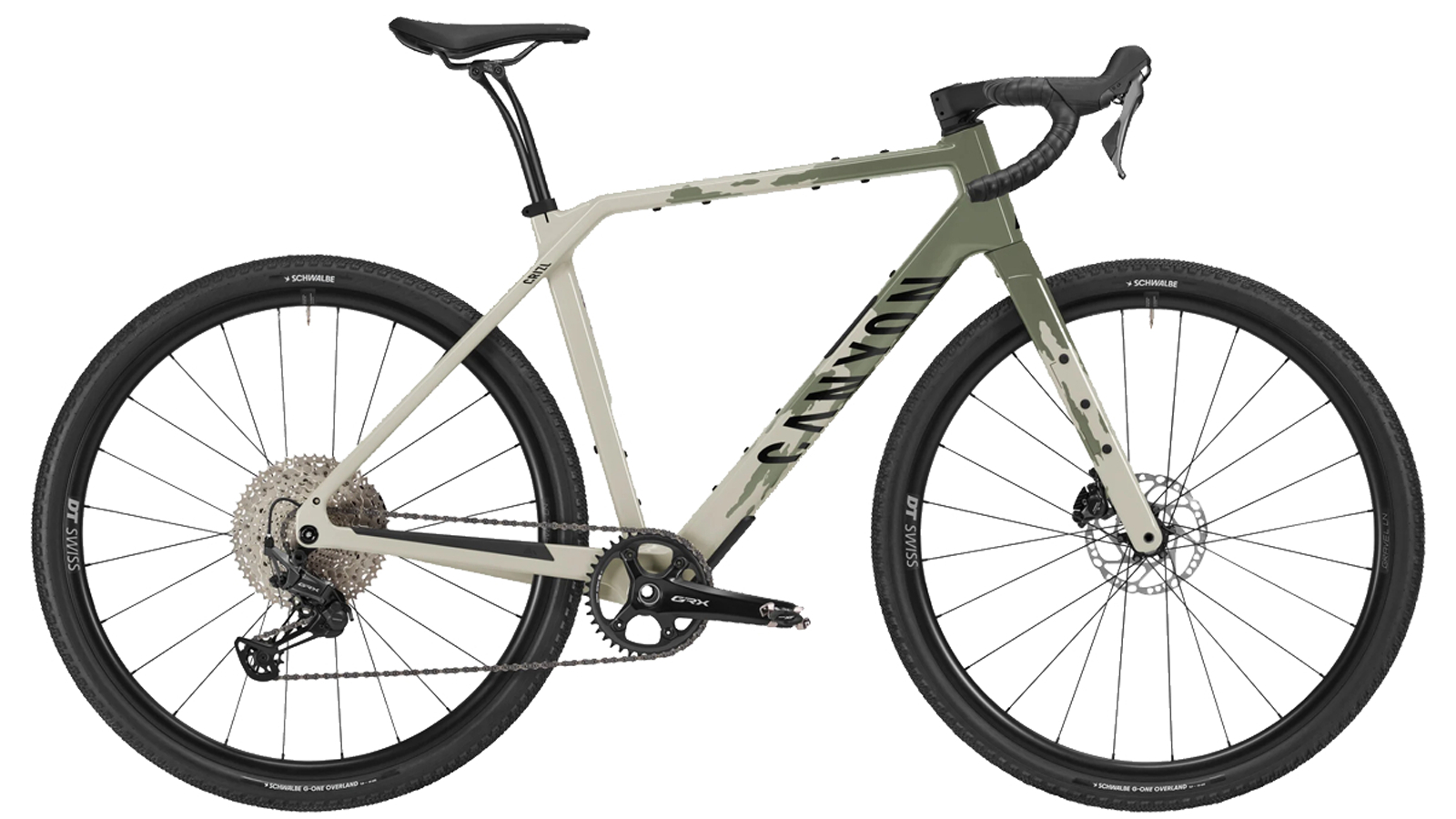
The Canyon Grizl ESC is a versatile gravel bike built for adventure with bikepacking bag mounts galore and comfort at the fore. It's not a slouch, per se, but it's more geared towards adventure.
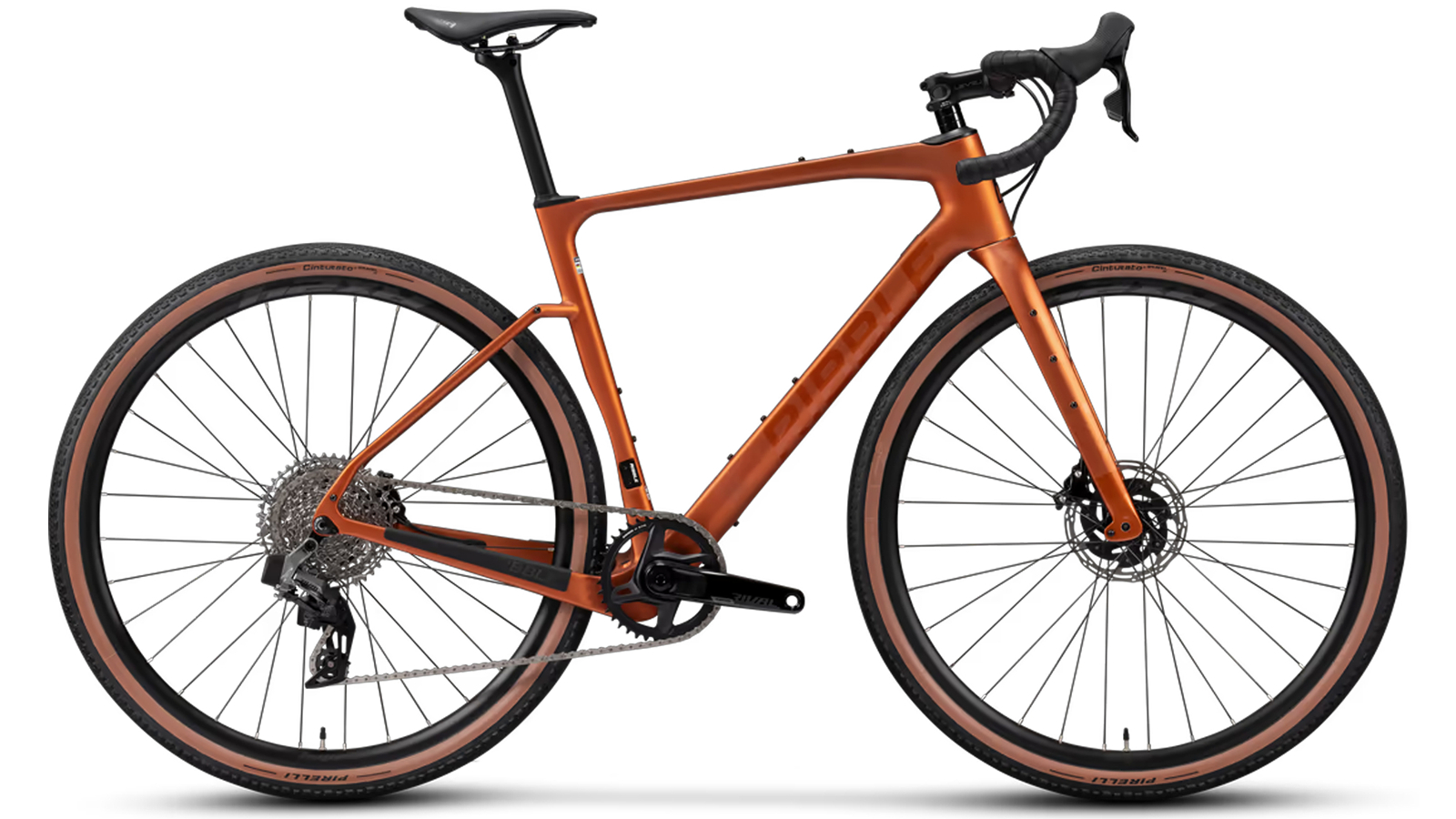
The Gravel SL is a really well-specced for the price, carbon-framed gravel bike that sits in the middle of the gravel spectrum, rather than focusing too heavily on racing or adventure.
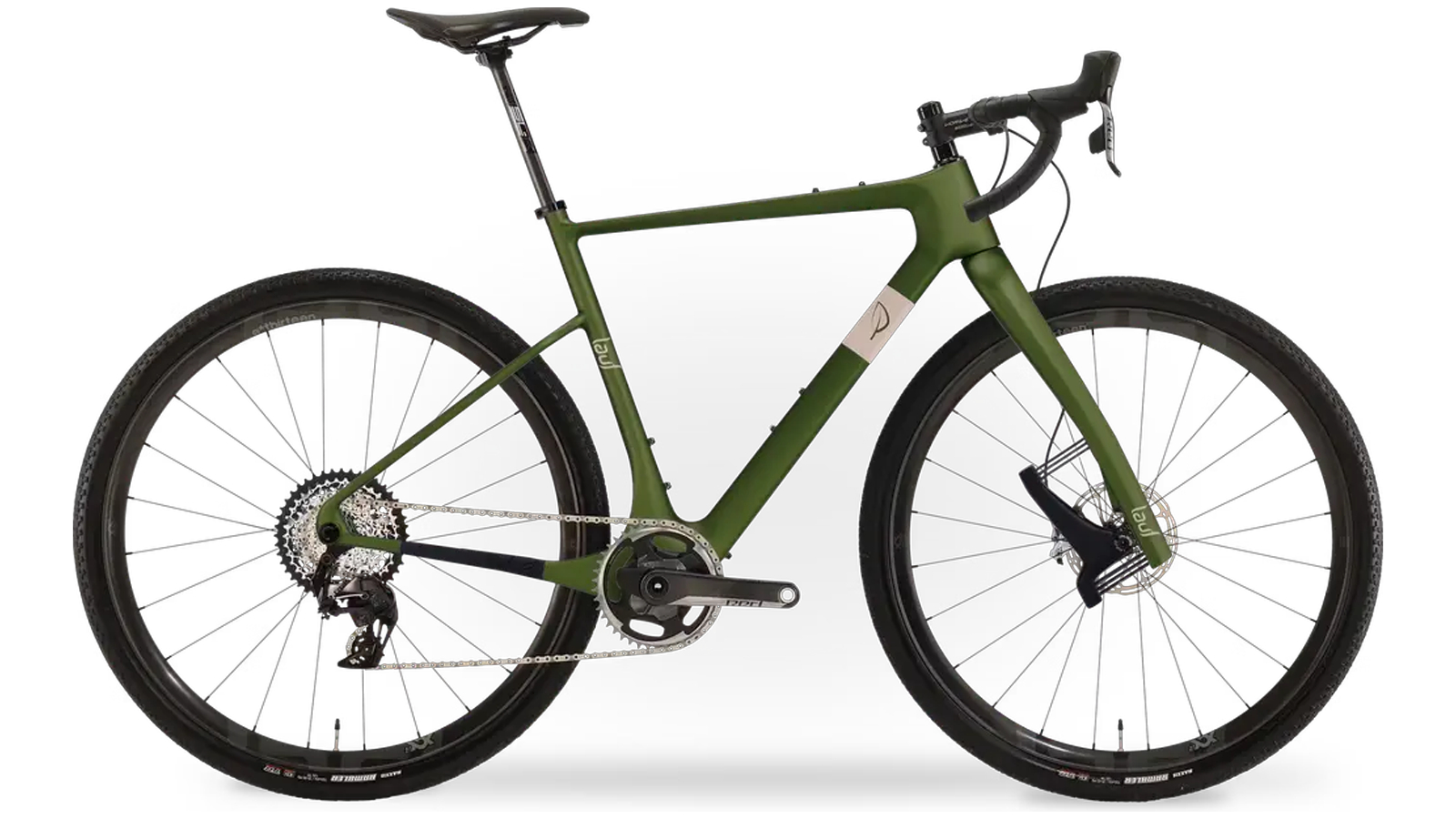
Big 57mm tyre clearance and suspension make the Seigla capable of terrain that most other gravel bikes would struggle with.
Last updated on 22nd October 2025
Many bikes have been updated to ensure they are up to date and current. The range of bikes featured has also been revised to offer a more rounded selection of bikes, adding the Wilier Rave SLR ID2 to the Also Consider section.
Best gravel bikes available today
You can trust Cyclingnews
Best gravel bike overall
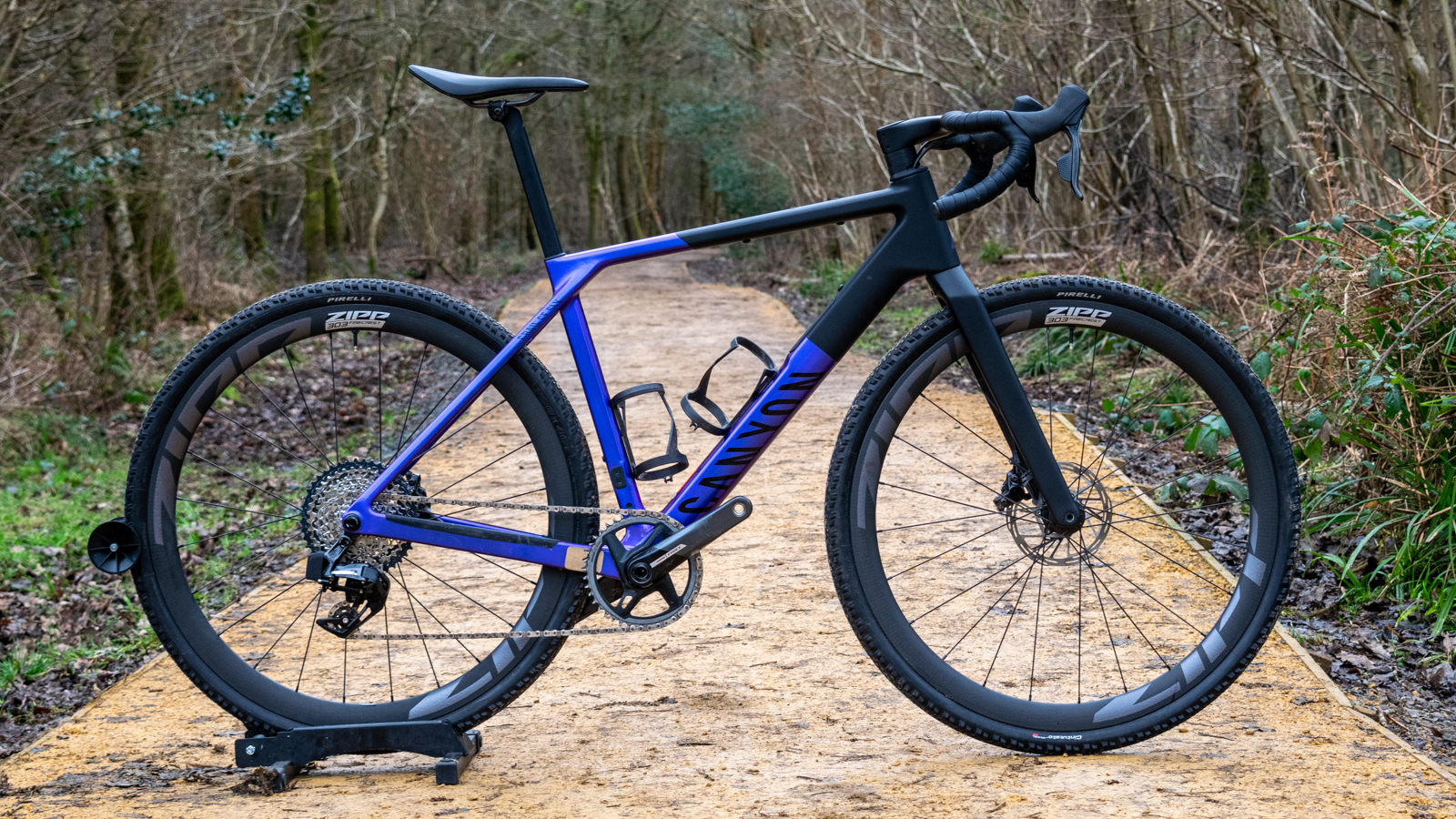
Specifications
Reasons to buy
Reasons to avoid
✅ You want a fast gravel bike: The aero tube profiles and efficient ride means the Grail is fast on all terrain.
✅ You want impeccable handling: The Grail's geometry enhances grip and control for confident and controlled handling.
❌ You don't want proprietary features: A lot of the accessories, including the GPS mount, light mount, mudguards, aero extensions and on-bike storage, are specific to the Grail.
❌ You want huge tyre clearance: The 42mm clearance will satisfy most riders but with trends going wider this could be restrictive
The Canyon Grail had a makeover in 2023, changing from the original all-rounder to a bike much more designed for gravel racing, which is 9.1 watts faster at 45kph than the original.
The new Grail has the same aero tube profiles as the Ultimate road bike and the double-decker handlebars have been replaced by a new, more conventional design. The bars slope downward from the stem to the hoods, to place you lower. The reach has also increased and there's the option to fit bar extensions.
The Grail frame now has internal storage and Fidlock magnetic mounts for a frame bag and top tube bag. Tyre clearance has increased slightly to 42mm, although if we were to level any criticism towards the Grail, we think the tyre clearance is a little restrictive based on current trends for bigger tyres.
Our Tech writer, Tom Wieckowski, tested the Grail and was impressed by the performance, as it feels fast on nearly all terrains. The ride is nimble and exciting, making it easy to change direction when doing things like climbing out of the saddle. On descents, the Grail is stable and adept in technical terrain, confidence-inspiring, and just downright fun. It's no slouch on the road or on quicker, smoother gravel sections, it doesn't feel a million miles away from a road bike, and the quicker wheels play their part in this by instantly responding to increases in power and effort.
We've selected the middle spec CF SLX frame here, but there are three tiers of Grail bikes to choose from.
Curious to find out more? Then read our in-depth review of the Canyon Grail CF SLX 8 AX.
Best gravel race bike
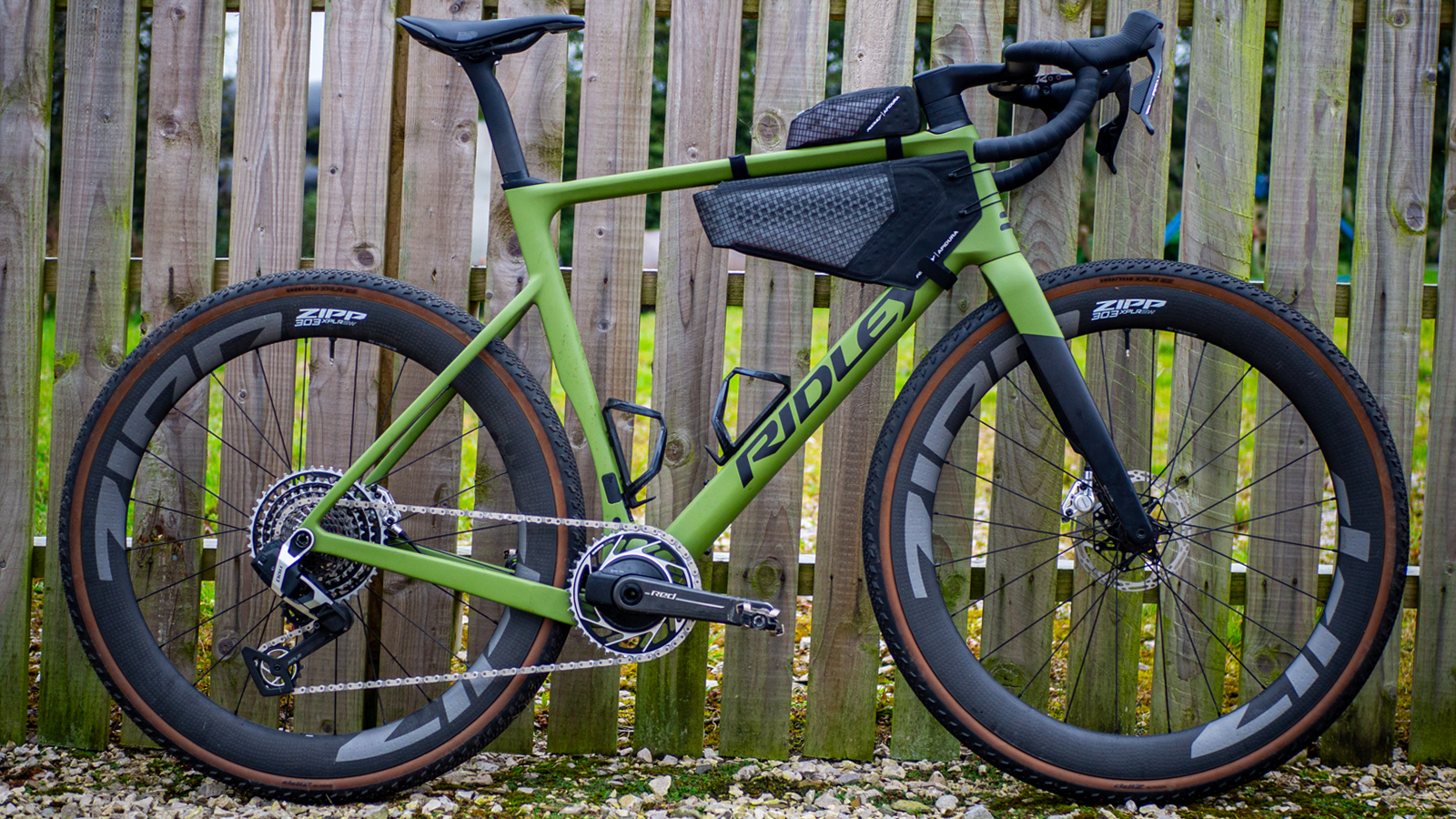
Specifications
Reasons to buy
Reasons to avoid
✅ You want a performance gravel race bike: Aero qualities, competitive weight and huge tyre clearance are ready to win races.
✅ You want a great spec: The stock spec sheet is ready to race, although some courses might warrant wider tyres.
❌ You want to ride rough gravel: In its stock form, the narrow handlebars and narrow rims limit its full capability on technical terrain.
Associate Tech Editor Josh Croxton proclaimed that the Ridley ASTR RS gravel bike will become a blueprint for how the best gravel race bikes will be designed over the next handful of years.
The combination of the aerodynamic frame with narrow handlebars, massive tyre clearance, decent weight, and a geometry that pairs a long wheelbase with a racy, aggressive fit. It's light too, with an 890g claimed frame weight (unpainted) and 7.9kg total weight for the review bike fitted with 50mm tyres.
The ASTR RS isn't breaking radical new ground in the world of gravel racing, there are plenty of gravel race bikes that leverage aerodynamic tricks or wide tyres. The reason the ASTR RS stands out is that it's the bike doing both of those things well, without any real detriment to weight.
The small details haven't escaped Ridley's attention either, narrow 36cm handlebars encourage a fast aero position when charging across flat terrain. There is also a set of new Apidura bags designed in conjunction with the bike, which are not only practical but also reportedly worth 2.6 watts at 36km/h.
As part of the testing process, Josh set up the Ridley ASTR RS to race several gravel events, finding it to be fast, handled excellently and added comfort. The bike is light enough to ease climbing and surefooted yet nimble to breeze through technical descents.
Check out our Ridley ASTR RS review for more juicy details.
Best lightweight gravel bike
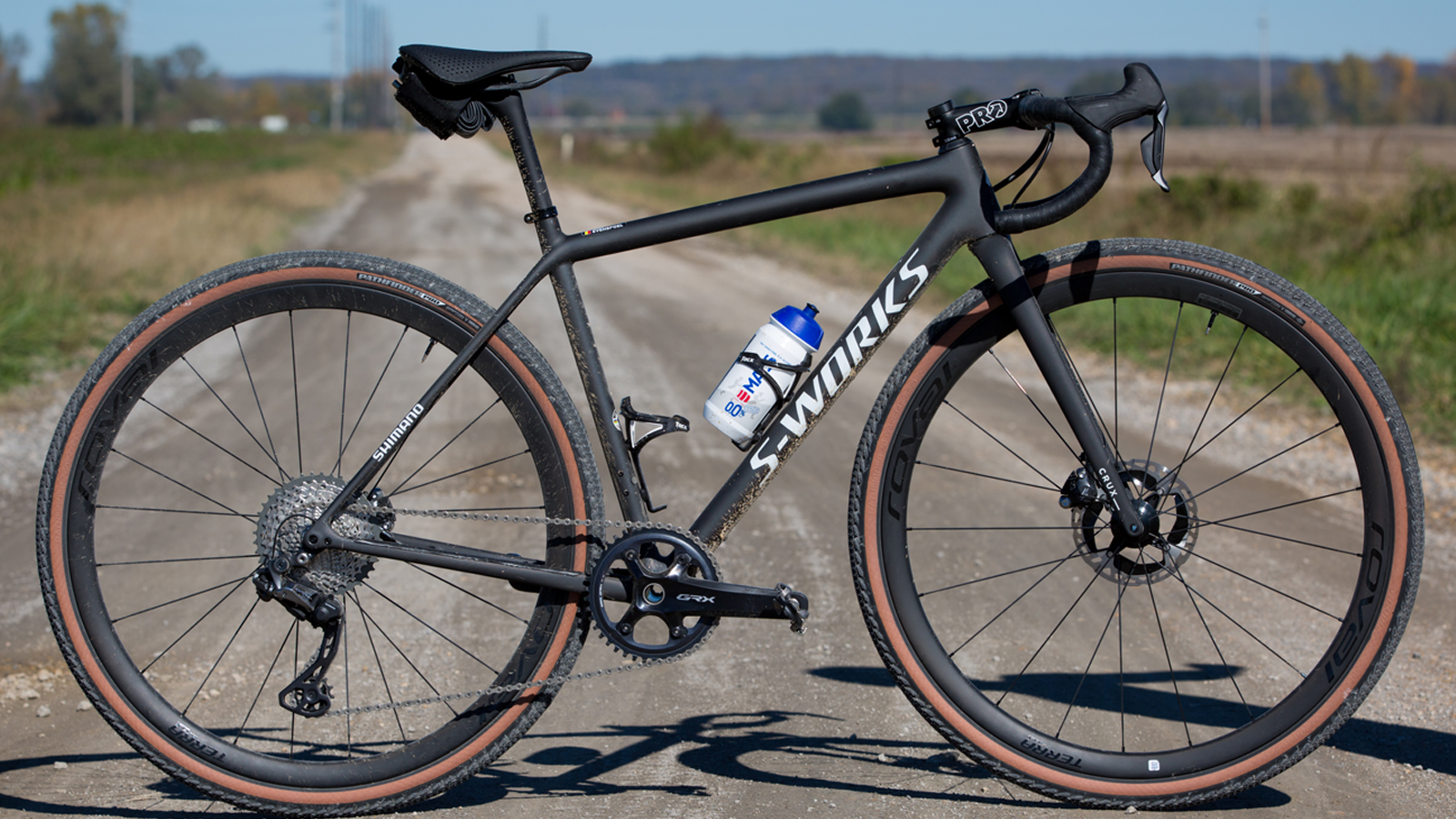
Specifications
Reasons to buy
Reasons to avoid
✅ You want a super light gravel bike: The Crux is one of the lightest gravel-capable framesets available.
✅ You want a bike that feels fast: Low weight, sharp handling and snappy acceleration encourage spirited riding.
❌ You want a stable bike over rough surfaces: Racey geometry can feel nervous on challenging terrain.
❌ You want internal cable routing: External routing may be easier to work on but it isn't as aero or as aesthetically appealing.
The latest generation S-Works Crux has turned its attention to gravel. It's still light though: 7.25kg light, which Specialized claims makes it the lightest gravel bike in the world.
The Crux inherits a lot of the lightweight tech from the S-Works Aethos and applies it to a gravel bike. The Crux's 700c x 47mm/650b x 2.1" tyre clearance means that you can fit wide rubber, as well as use the Crux as a racing rig, and Spesh has tweaked the geometry for increased stability. The front end still runs external hoses, rather than being integrated, and there's a two-part bar and stem.
We felt a little underbiked on even unaggressive terrain, where a less edgy geometry or wider tyres would have helped, but the Crux's gravel racing (and cyclocross racing) credentials are impeccable. Aero-optimised gravel bikes are going to have an edge on efficiency, but that doesn't seem to affect the Crux's ability to absolutely rocket over smoother gravel surfaces. Unsurprisingly, the Crux is most at home on hilly parcours, where its low weight and enormous levels of lateral stiffness will be a significant advantage.
You can read more of our experience with the bike in our Specialized S-Works Crux first ride review.
Best adventure gravel bike
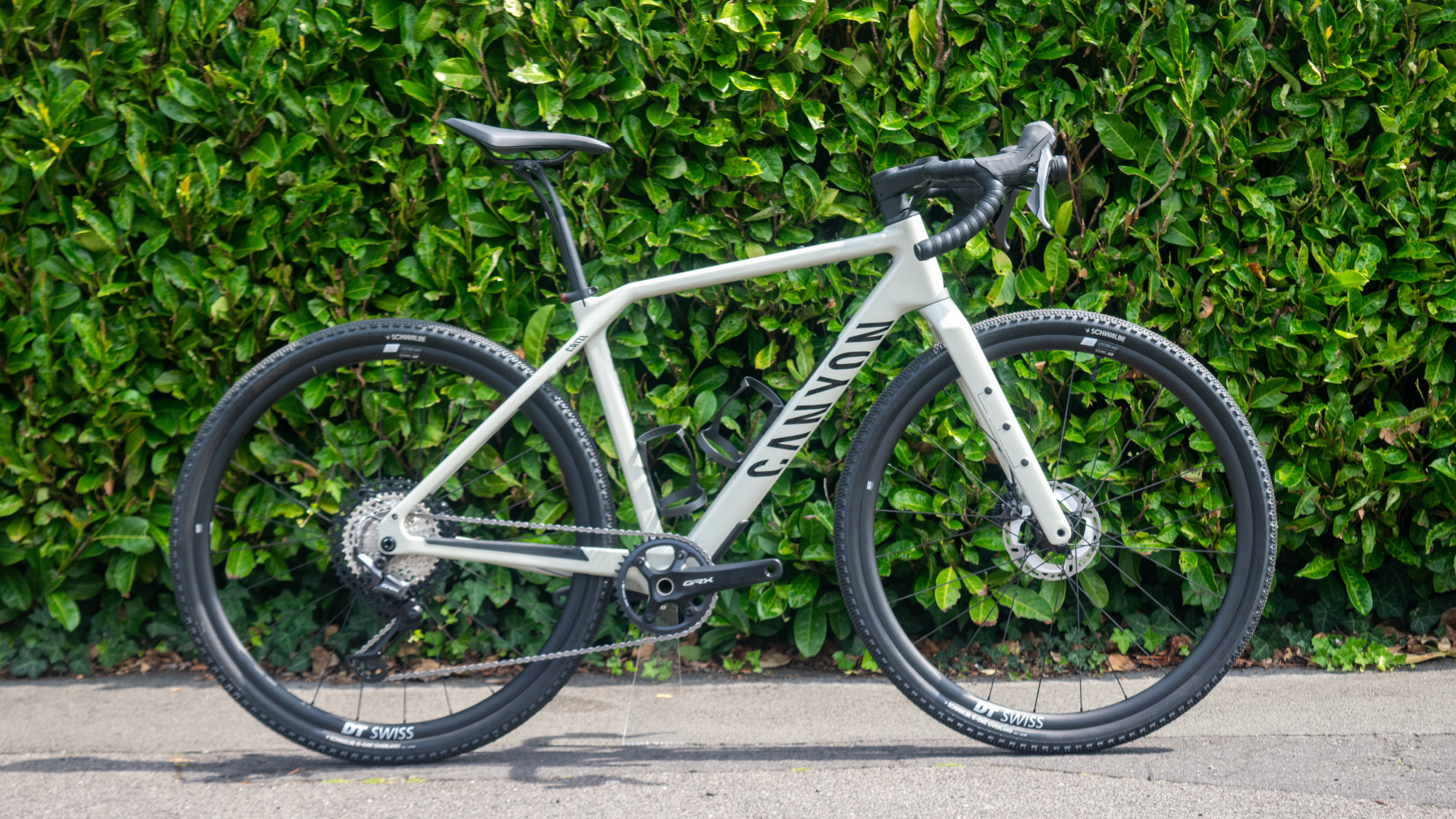
Specifications
Reasons to buy
Reasons to avoid
✅ You want a very capable gravel bike: The Grizl's geometry inspired confidence on rough terrain, especially when fitted with 54mm tyres.
✅ You want to go bikepacking: Comfortable ride, built-in dynamo lights and all the mounts you could need make the Grizl a superb multi-day adventurer.
❌ You want a choice of mudguards: The Grizl is only compatible with Canyon's own proprietary mudguards.
The Canyon Grizl is the direct-to-consumer brand's idea of a do-everything-go-anywhere gravel bike that's designed to take on everything from epic gravel rides to laden exploration, covering a broad spectrum of terrain.
If you're already familiar with the Canyon Grail, you may wonder why the brand has another gravel bike in its lineup, and the answer is to offer something that's more of a rugged explorer than a lightweight race machine. If you're after the latter, the Grail could be more up your street, whereas the Grizl comes with more tyre clearance, a longer wheelbase that provides a more stable and comfortable ride feel over long periods of time.
After the Grizl’s update this year, which saw the geometry become slacker, taller and longer, I wondered how the new bike would ride. A challenging and very wet ride in Girona was a great first test for the bike.
I felt confident attacking a challenging, long and rocky descent on the bike, the latter stages in heavy rain. The bike was very stable in the drops on wide, fast sections but I could brake hard, change line quickly and get it through rocky, steep turns with confidence. Its off-road handling credentials are there.
On smoother asphalt, the bike still felt engaging and pleasant to ride, not too upright or boring. Canyon has struck a nice balance with the geo changes and hasn’t taken things too far in one direction.
All the framesets have plenty of mounts for accessories, including anything cage mounts of the fork that can carry up to 3kg on each side. However, be warned that the mudguard mounts are only compatible with Canyon's mudguards.
Our reviewer Tom is currently testing the Canyon Grizl ESC w/ ECLIPS, so expect a full review soon.
Best budget gravel bike
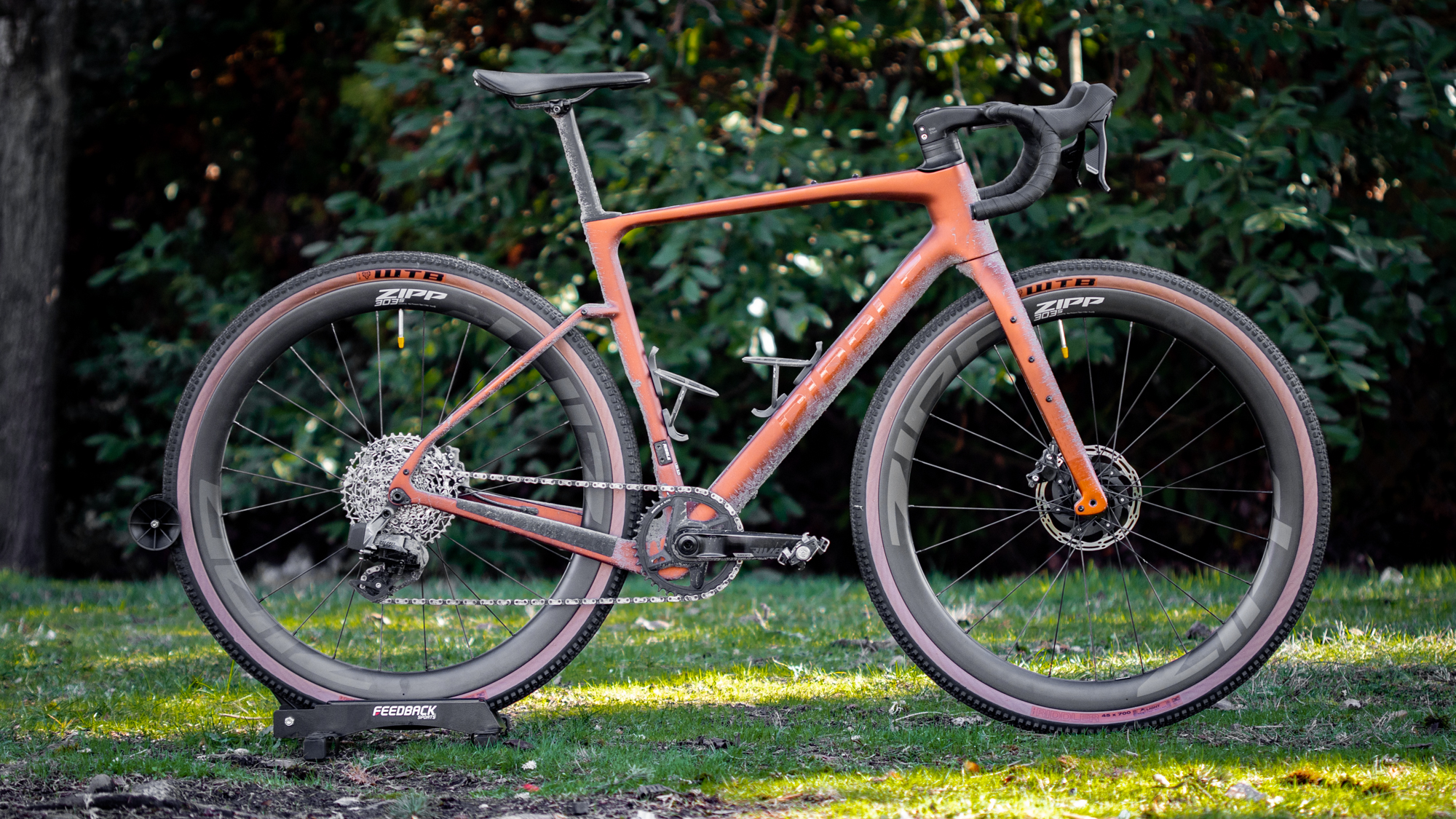
Specifications
Reasons to buy
Reasons to avoid
✅ You want a versatile gravel bike: The Gravel SL is stiff enough for the road, capable enough on gravel and has enough mounts to go bikepacking.
✅ You want a high-spec bike at a competitive price: Ribble's package offers an impressive level of componentry for the money.
❌ You want an engaging ride: Its versatility means the Gravel SL isn't the most inspiring bike to ride.
The Ribble Gravel SL manages to mix fast with a dose of adventure for a bike that can be configured as you like your gravel. There's a wide range of builds available and options for customisation beyond that. Unfortunately, what you won't find are any 2x options despite the ability to mount a front derailleur.
Taking full advantage of the customisation Ribble has a reputation for, our test bike was a mix-and-match. The groupset was the SRAM Rival 1 AXS from near the bottom of the SRAM hierarchy, but the wheels got an upgrade to the Zipp 303s in 700c. In an effort to add even more on-road usability, the bar and stem were also swapped to the one-piece aero option from the top-spec build that Ribble offers.
There are loads of mounts, including on the fork legs, making the Gravel SL a do-it-all gravel bike rather than a specialist gravel racer. It even works well for winter road use with mudguards.
Read our full review of the Ribble Gravel SL for more on the bike's versatility.
Best gravel bike for extreme terrain
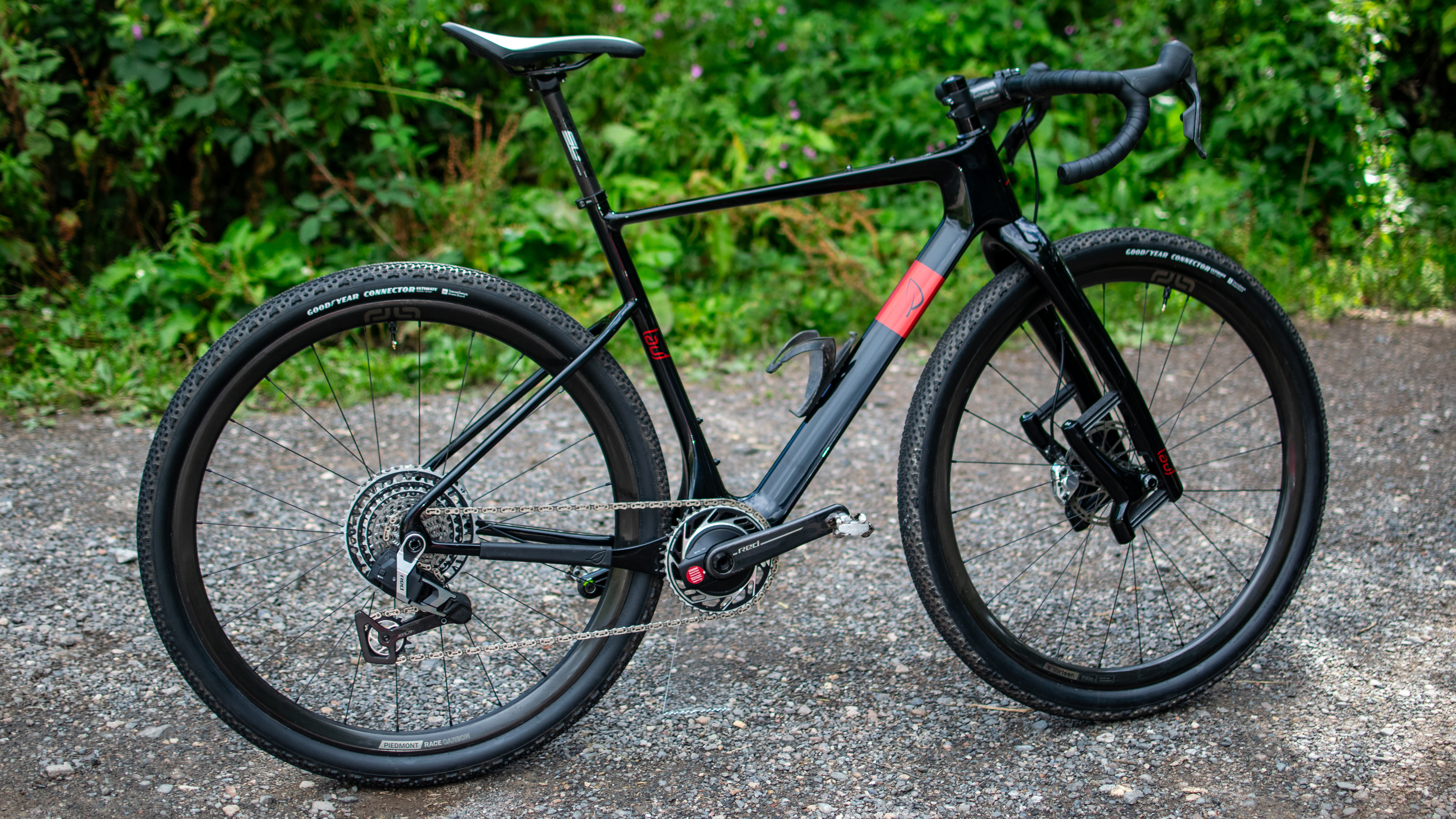
Specifications
Reasons to buy
Reasons to avoid
✅ You want an ultra comfortable gravel bike: Lauf's Grit 3 fork offers impressive vibration absorption, along with the Sieglas huge tyre clearance.
✅ You want a gravel bike that's easy to maintain: Exposed cable routing at the front, threaded bottom bracket and suspension fork with no moving parts makes servicing straightforward.
❌ You don't want any toe overlap: Even on our size 54cm test bike we still had toe overlap.
Riding the Lauf Seigla Ultimate for a great few months has been a revelation. Initially, I wasn’t sure about the wild-looking Grit 3 fork, but once I got it out on the gravel, it all made sense. The leaf-sprung fork smooths out fine trail chatter in a way no traditional suspension or rigid fork has ever done for me. It offers 30mm of travel, never needs maintenance, and genuinely improves comfort and control without compromising speed. Paired with 50mm tyres, the ride is so smooth it feels like floating over rough ground.
The spec on my Ultimate build has been faultless—SRAM Red AXS XPLR, carbon wheels, and thoughtful finishing touches like the vibration-damping headset bearing and ergonomic Smoothie bar. Lauf has clearly prioritised rider comfort and usability with external brake hoses, a round seatpost and a threaded bottom bracket, making it refreshingly easy to live with.
It's fast, stable, and confident on descents but still fun and agile when things get technical. This bike hasn’t put a foot wrong, and I’ve grown to really admire Lauf’s no-nonsense, rider-focused design ethos. The Seigla is seriously capable, incredibly smooth, and surprisingly easy to love.
Check out our in-depth review of the Lauf Seigla Ultimate gravel bike for more details.
Best steel gravel bike
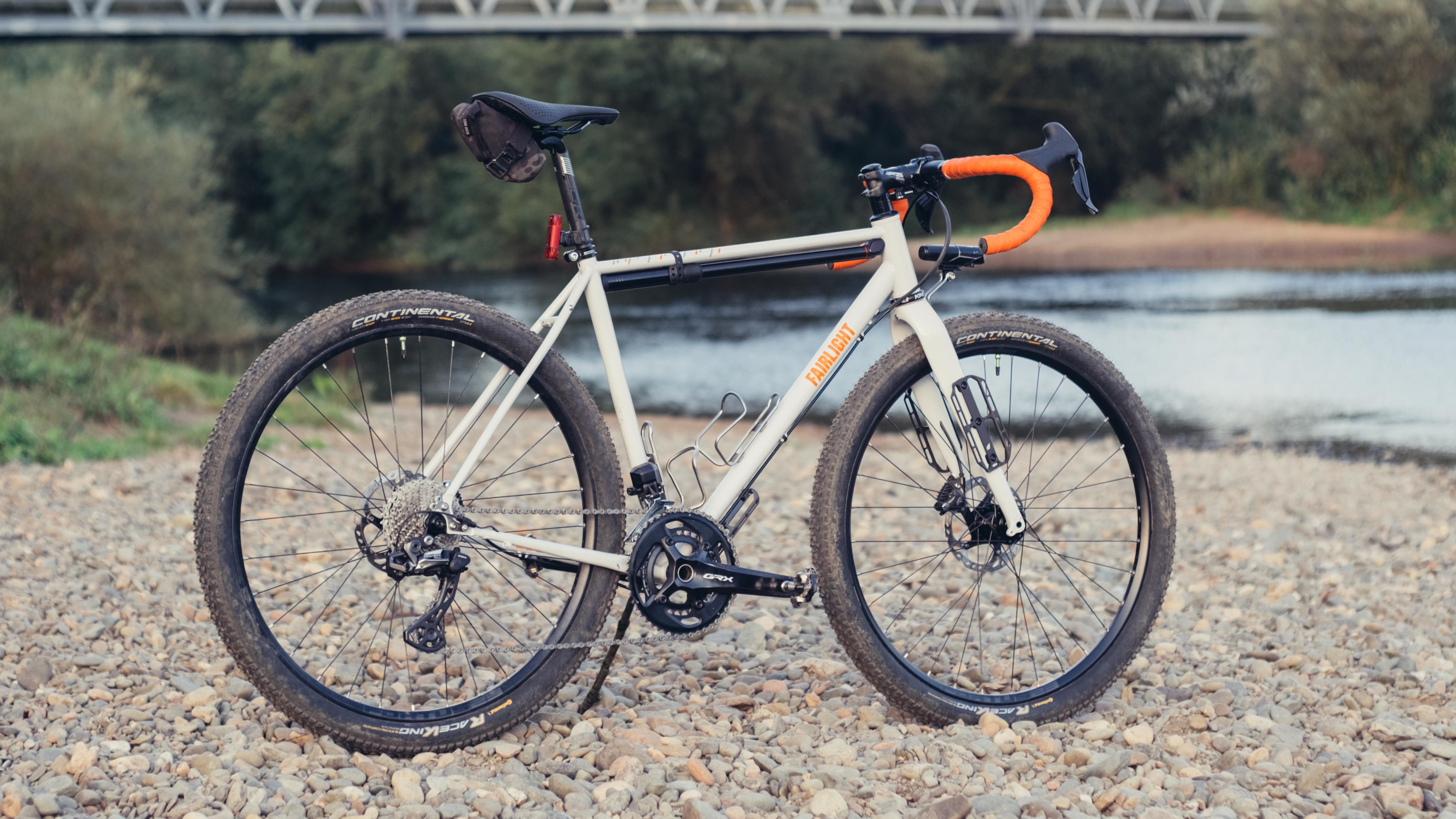
Specifications
Reasons to buy
Reasons to avoid
✅ You want a versatile gravel bike: Engaging ride, huge tyre clearance and well-thought-out details mean the Secan can turn its hand to all forms of gravel riding.
❌ You want a light bike: There is no getting around it, steel is heavier than other frame materials.
Another versatile gravel bike, the custom Reynolds steel-tubed Fairlight Secan has the skinny good looks of the best steel bikes and details like a third in-frame set of bosses on larger frame sizes and custom-made dropouts.
The small-ish volume manufacturing means that you can choose your own geometry and spec for the Secan. We've ridden the bike under pretty much every gravel scenario and come away impressed by its do-it-all nature. Add big tyres and you can tackle MTB territory; load up and it's a bikepacker; thinner tyres and it's a pretty good cyclocross bike; slicker ones and it's good for that 300km Audax ride.
The Secan was also featured in our gravel bike group test and came away with the best backpacker award due to its customisable nature and steel frame. It's a really solid all-rounder that's fast and nimble on the flat but can also handle a surprising amount of rough stuff.
It's worth noting that Fairlight has now released the Secan 3.0, which continues where the Secan 2.5 left off. The latest Secan gets a newly shaped chain and seat stays, new dropouts, a carbon fork and even more tyre clearance, with space for up to 700 x 53mm and 62mm in 650b.
We have put in a ton of miles, using and abusing the Fairlight Secan 2.5 for a year and a half. Read our long-term review to find out more.
Best titanium gravel bike
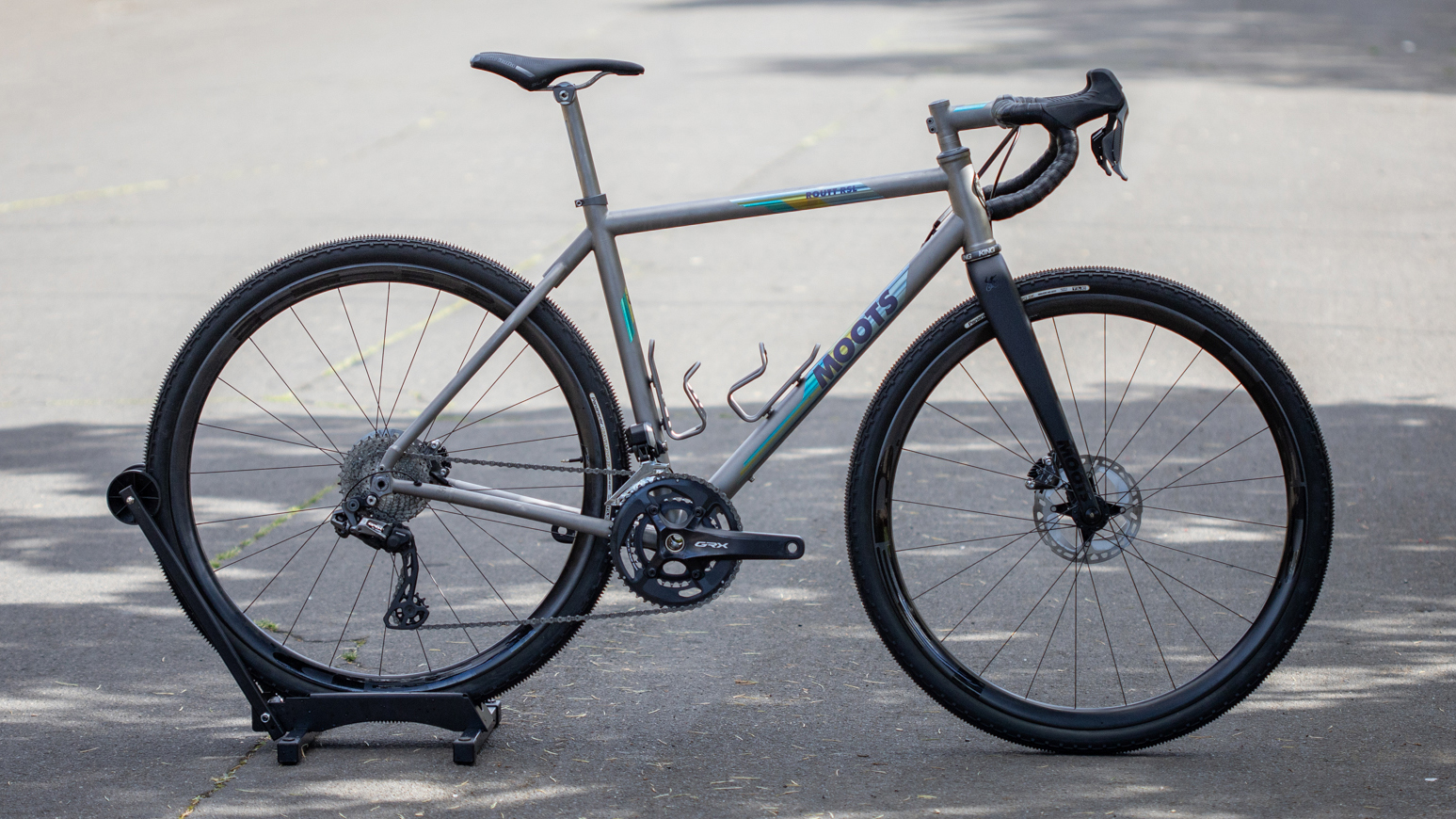
Specifications
Reasons to buy
Reasons to avoid
✅ You want a boutique forever bike: The legendary ride quality will make you feel special every time you ride.
✅ You want a timeless-looking bike: On a group ride packed with the latest carbon race bikes, the Moots will stand out with its effortless aesthetic.
❌ You don't want any toe overlap: Even on our size 54cm test bike we still had toe overlap.
Moots and its titanium frames have achieved almost legendary status. The RSL is the brand's raciest gravel bike option, with its premium custom butted tubing and 3D-printed dropouts. Although not totally custom, Moots frames can be tweaked to your requirements.
Beyond the frame itself, the build is also customisable. The 50mm tyre clearance means that your options aren't limited, and you can fit something that will take you into tough terrain.
We raved about the ride feel that's stiff at the head tube and bottom bracket, but disperses vibration and larger hits for great comfort. Although the frame and fork aren't the lightest, the ride surpasses this.
You can read more about our 320km endurance ride on the Moots Routt RSL here.
Also consider
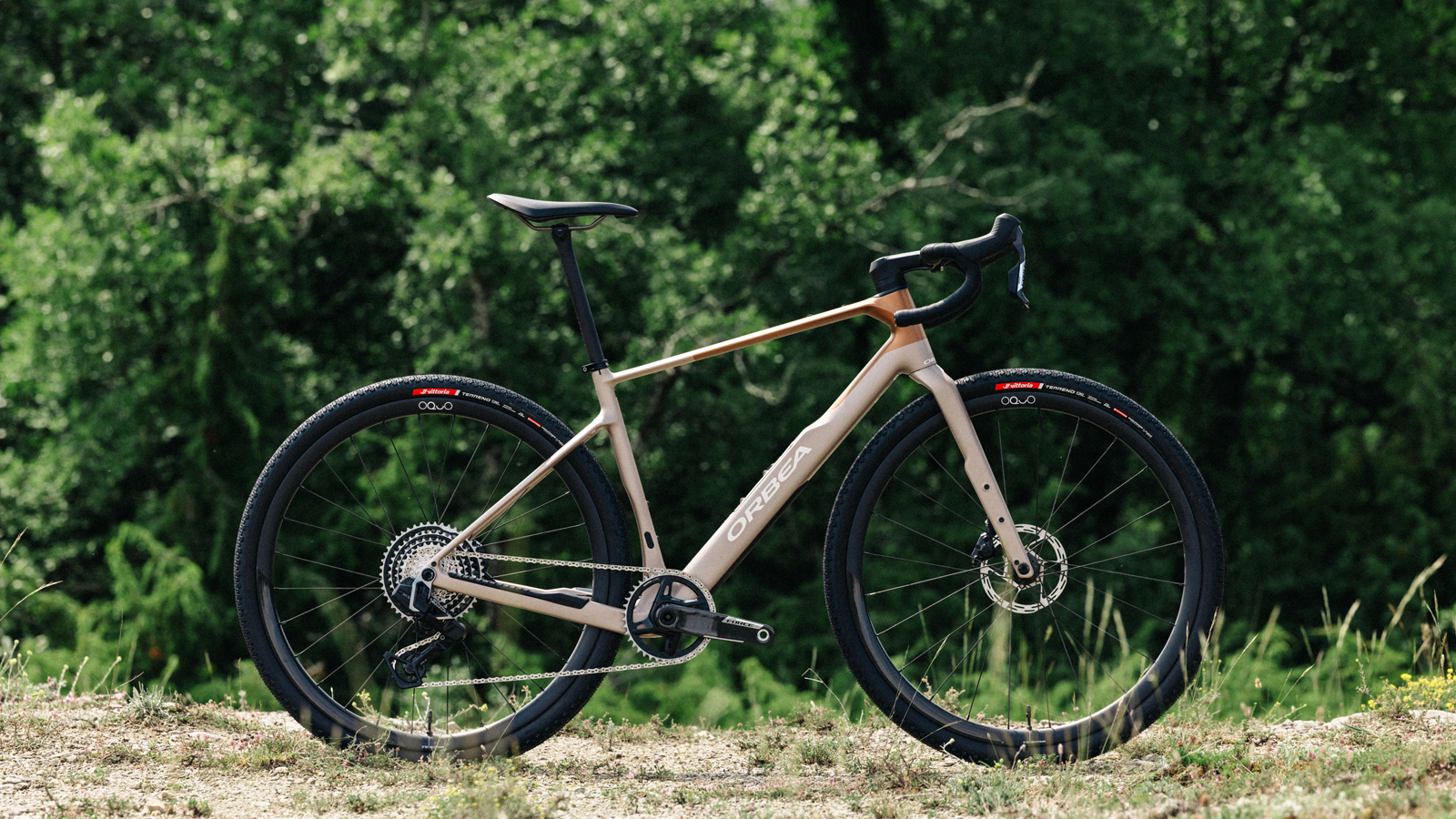
Specifications
Reasons to buy
Reasons to avoid
I recently had the chance to ride Orbea’s third-generation Terra gravel bike at its launch in Vitoria-Gasteiz, and I came away genuinely impressed. From the first pedal stroke, the Terra felt immediately familiar – sporty but not overly aggressive, and balanced in a way that made long days in the saddle feel effortless. Orbea has updated the frame with subtle but effective geometry tweaks to boost stability and comfort without dulling its speed. I really appreciated the increased tyre clearance (now up to 50mm), extra mounting points, and the much-improved downtube storage – all features that make this bike far more adventure-ready.
I’m also glad Orbea resisted the urge to jump on the gravel suspension bandwagon. In my view, wider tyres do the job just fine, and it's refreshing to see a brand keep things simple without compromising performance. The Terra might not be the most “capable” in terms of extreme terrain, but it rides fast and smooth, with just the right amount of compliance. It’s not trying to be a mountain bike – and that’s a good thing. For me, it hits that elusive sweet spot between race-ready and all-day adventure, and I’m excited to spend more time pushing its limits.
For more details, check out the Orbea Terra M21eTEAM 1X first ride review.
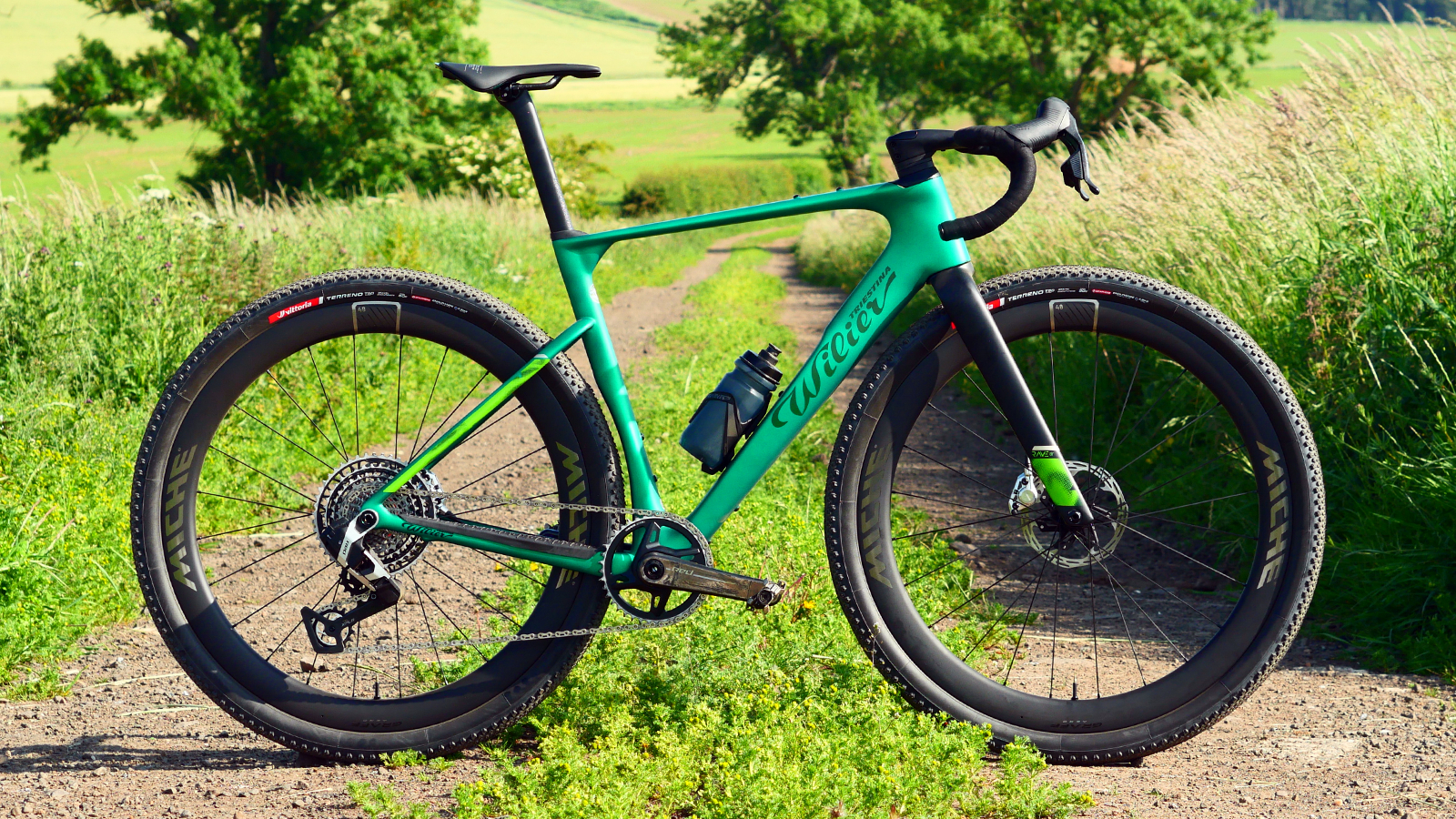
10. Wilier Rave SLR ID2
Specifications
Reasons to buy
Reasons to avoid
Wilier updated its Rave gravel bike, completely overhauling the new Rave SLR ID2, giving it a far more gravel race focus. This won't suit all riders, but if you are looking for an ultra-fast gravel bike with sharp handling, then the Wilier RAVE SLR ID2 is worth consideration.
Every time I swung a leg over the RAVE SLR ID2, the ride would always turn into an intense effort from start to finish. A combination of the frame's stiff chassis and aero-sculpted tubing encourages fast-paced riding, rewarding every stamp on the pedals with blistering forward motion. On top of that, the geometry and narrow stock integrated handlebar allowed me to get into an aero position to eek out every last bit of speed. The handling is sublime too, precise front wheel placement meant I could drive the bike through bends at an alarming speed.
Don't let the large 53mm tyre clearance fool you, this isn't an adventure bike. The aggressive position can feel unsettled on steep technical terrain, and other than some top tube bosses, there are no additional facilities for extra luggage. Instead, the Rave SLR ID2 truly shines in shorter bursts where you can empty every last ounce of energy through the pedals, making it the perfect weapon for gravel crits or short-distance gravel racing.
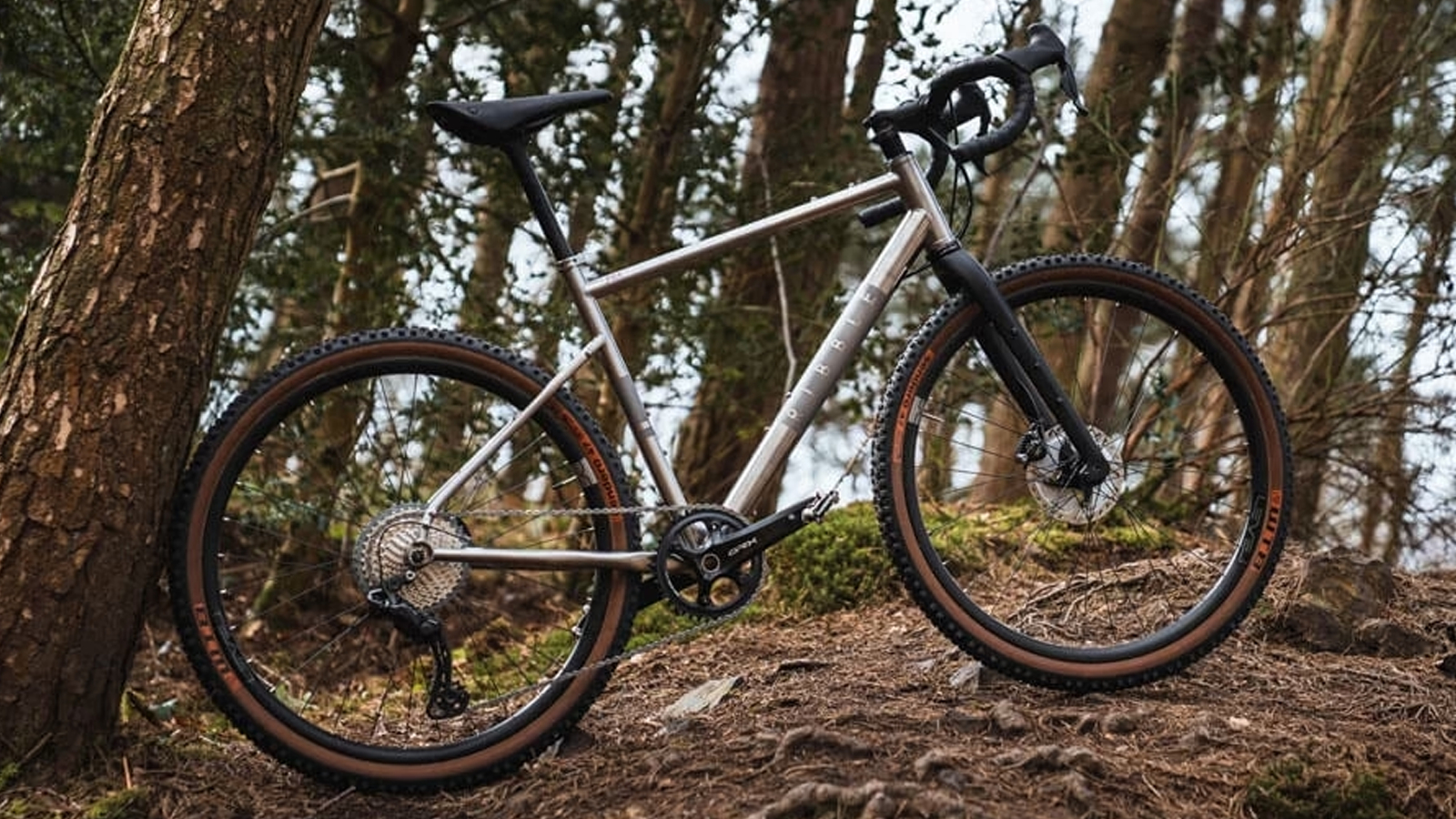
11. Ribble Gravel Ti Sport
Specifications
Reasons to buy
Reasons to avoid
Titanium was once the luxury material reserved for riders looking for a premium forever bike, however, these days, there are plenty of more affordable titanium options out there. Ribble's Gravel Ti is one of these, offering a fully built titanium gravel bike for less than the cost of most titanium framesets.
Ribble offers several build options for the Gravel Ti, but arguably it's this Gravel Ti - Sport that stands out. Despite being the base model, it still comes equipped with a wireless electronic SRAM Rival XPLR AXS groupset. It comes equipped with Mavic Allroad 1 Disc wheels, but they can be upgraded to Hope RX24 Alloy wheels or Mavic Cosmic S 42 Carbon at the point of sale.
Ribble uses custom-profiled 3Al/2.5V titanium tubing that provides the kind of sprung resilience that is the whole point of titanium in the first place. What results is a strong, compliant frame that glides over the rough stuff.
12. Trek Checkpoint SL 6 AXS Gen 3
Specifications
Reasons to buy
Reasons to avoid
Trek is on the pointy end of the pack when it comes to comfort technology, and it shouldn't come as a surprise to find the brand's IsoSpeed decoupler integrated into the seat cluster — though we are surprised not to have it at the front too.
The frame sees Trek's high-end OCLV carbon fibre and the Gen 3 Checkpoint is now more focused on endurance riding since Trek introduced the racier Checkmate. That means the Checkpoint also features mounts galore and bash guards on the down tube and chainstays without the concerns of marginal race gains. Both the drive-side and non-drive-side chainstays are dropped to give clearance for a 50mm gravel tyre. The downtube features a generous amount of internal storage and the hatch door is the same as the one used on Trek's, so you know it is secure enough.
We haven't tested the Gen 3, but we were big fans of the previous generation Trek Checkpoint SL6 eTap and the versatility it offered.
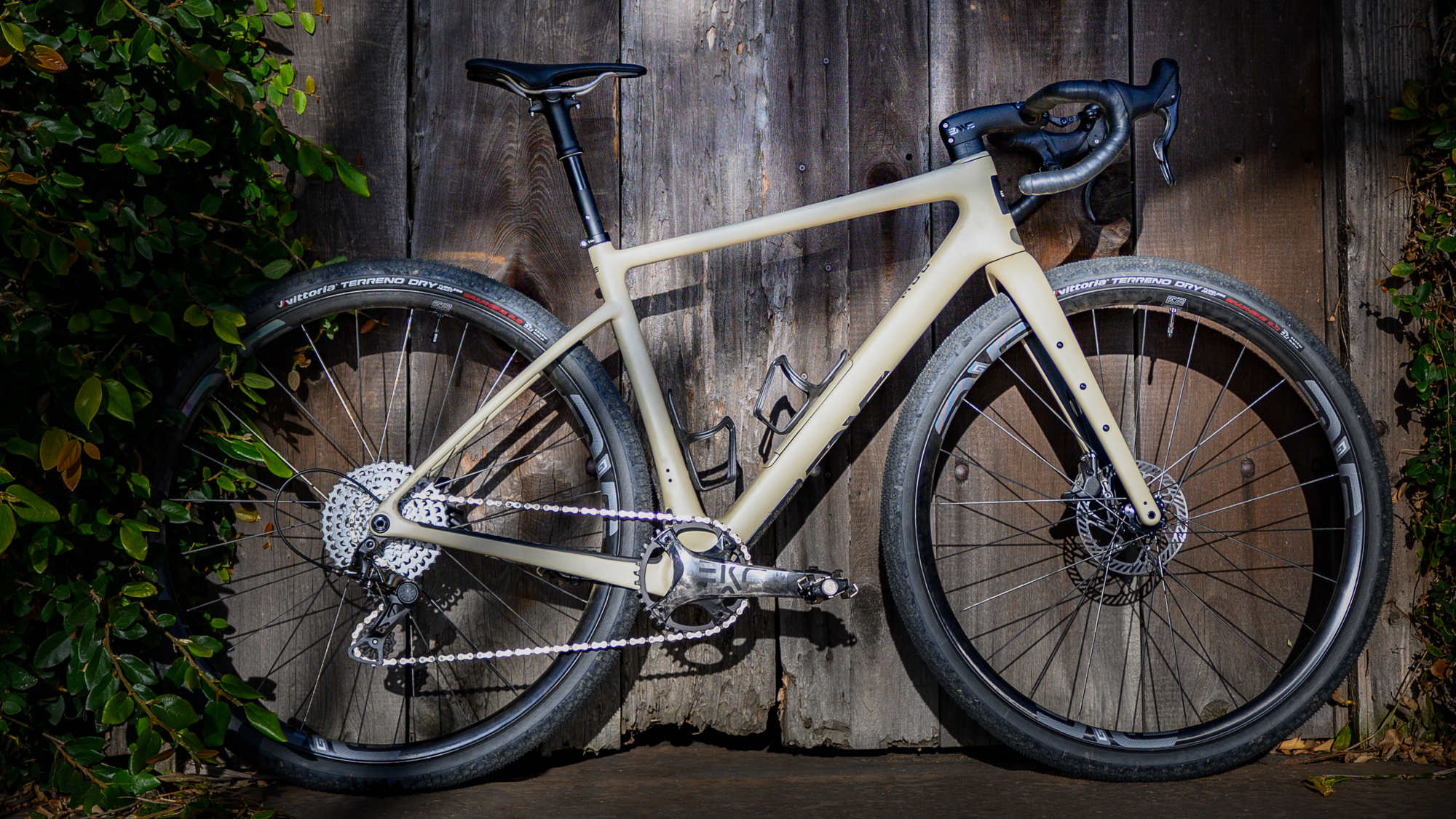
Specifications
Reasons to buy
Reasons to avoid
The Enve MOG is a gravel bike that's fast enough for racing, but comes with all the mounts and other options to make it much more versatile than the majority of the best gravel race bikes. It's stiff like a race bike and lively, but not so much so that it's scary to ride.
Riding the Enve MOG in Southern California was a revelation. I’ve always wanted a bike that blends pure speed with real-world versatility, and this one nails it. Enve clearly built it for riders like me, people who thrive on fast tarmac pacelines but also crave the thrill of dirt roads, singletrack, and long adventure days.
On smooth roads, it’s razor-sharp and snappy. On rougher gravel, the stability inspires confidence, even when I overcooked a line. I ran 47mm tyres with a dropper, which made technical sections far less intimidating, and the bike kept urging me to push harder.
It’s undeniably stiff—something I loved for climbing and acceleration, but worth noting for comfort-sensitive riders. Still, compared to rivals, it offers rare “one bike does it all” capability. Whether racing, bikepacking once a year, or just chasing fast gravel miles, the MOG never feels like a compromise.
Despite its racing bent, the MOG comes with all the mounts a bikepacker might want, including on the fork legs. There's a storage cubby in the down tube and you can fit a dropper post. Although it's aero-optimised for 42mm tyres, you can fit 50mm rubber if you want more squish.
You can buy the MOG as a "rolling chassis" including an Enve bar and seatpost. Enve now sells an Ekar build too, complete with Enve Foundation AG25 wheels, of course.
Read about how we got on with the Enve MOG in our full review.
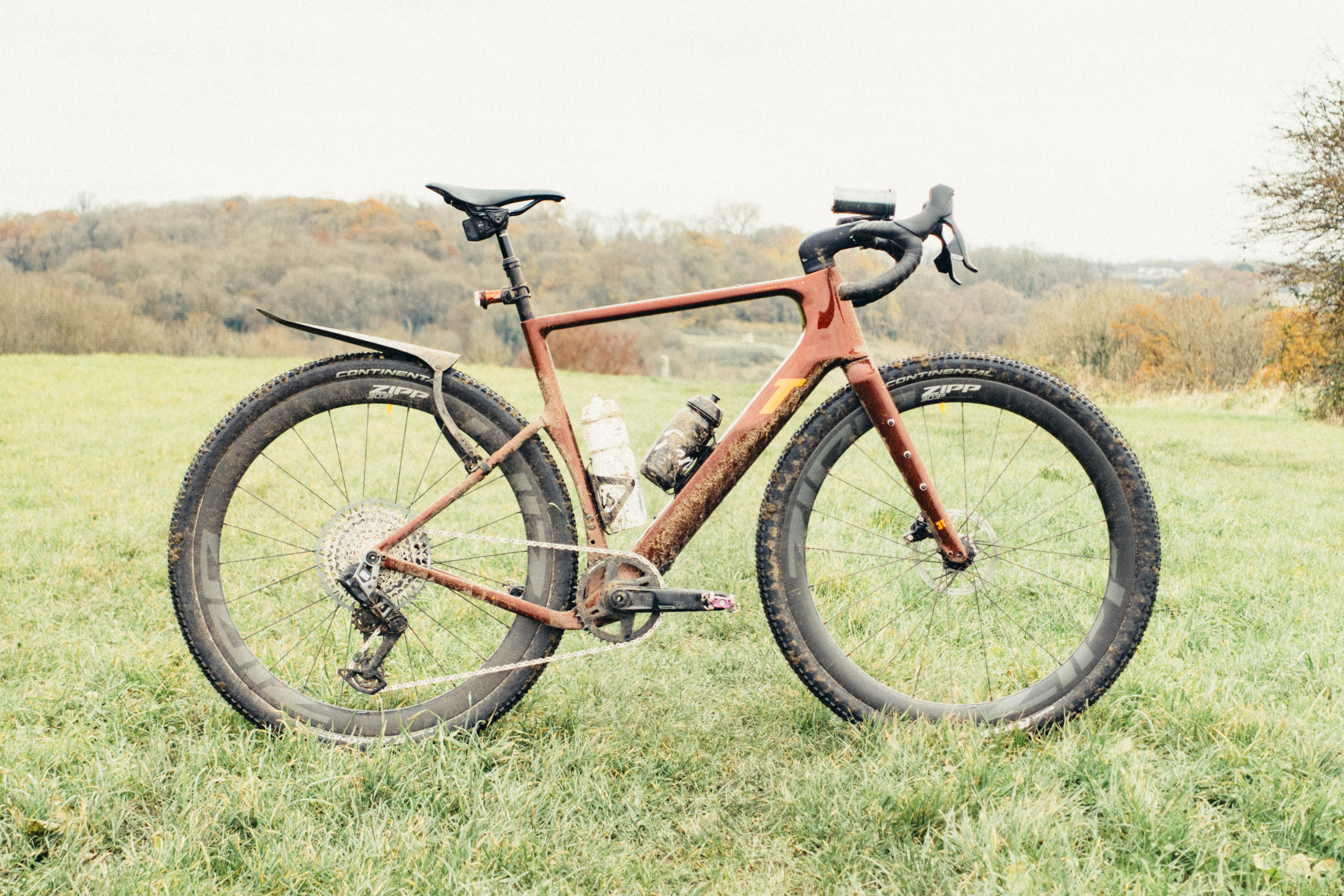
Specifications
Reasons to buy
Reasons to avoid
The name says it all really. With clearance for 57mm tyres on 700c wheels, this is one capable gravel bike if your riding takes you where no drop bar bike has a right to be seen. At the same time, it still boasts an aero design based on 3T's original Exploro and you can fit a 2x as well as a 1x groupset.
We reckoned that the chunky looks were more reminiscent of an MTB than a road bike and they make for a complete bike that in all specs weighs over 10kg. The handling too was far more off-road than on. The 3T can handle pretty much anything that an MTB could, which for us begs the question: why choose the 3T Extrema Italia over a hardtail MTB?
There is still a strong use case for a gravel bike like this, riding the Extrema Italia isn't necessarily about hunting out the roughest singletracks to ride. Instead, it's about being equipped to tackle anything that a long-distance gravel route may throw at you.
When testing on fast open descents, it was stable, with ample grip from the tyres allowing the brakes to be released and gravity to do its work. It held speed well on the flat too, and thanks to the gargantuan cassette, no gradient proved too much; especially on muddy climbs, the ability to stay in the saddle was invaluable.
Admittedly, it's a specialist machine, but for riders who seek long off-road adventures on unexplored gravel roads, the 3T Extrema Italia is unmatched.
You can read more about our thoughts on 3T's monster gravel bike in our full 3T Extrema Italia review.
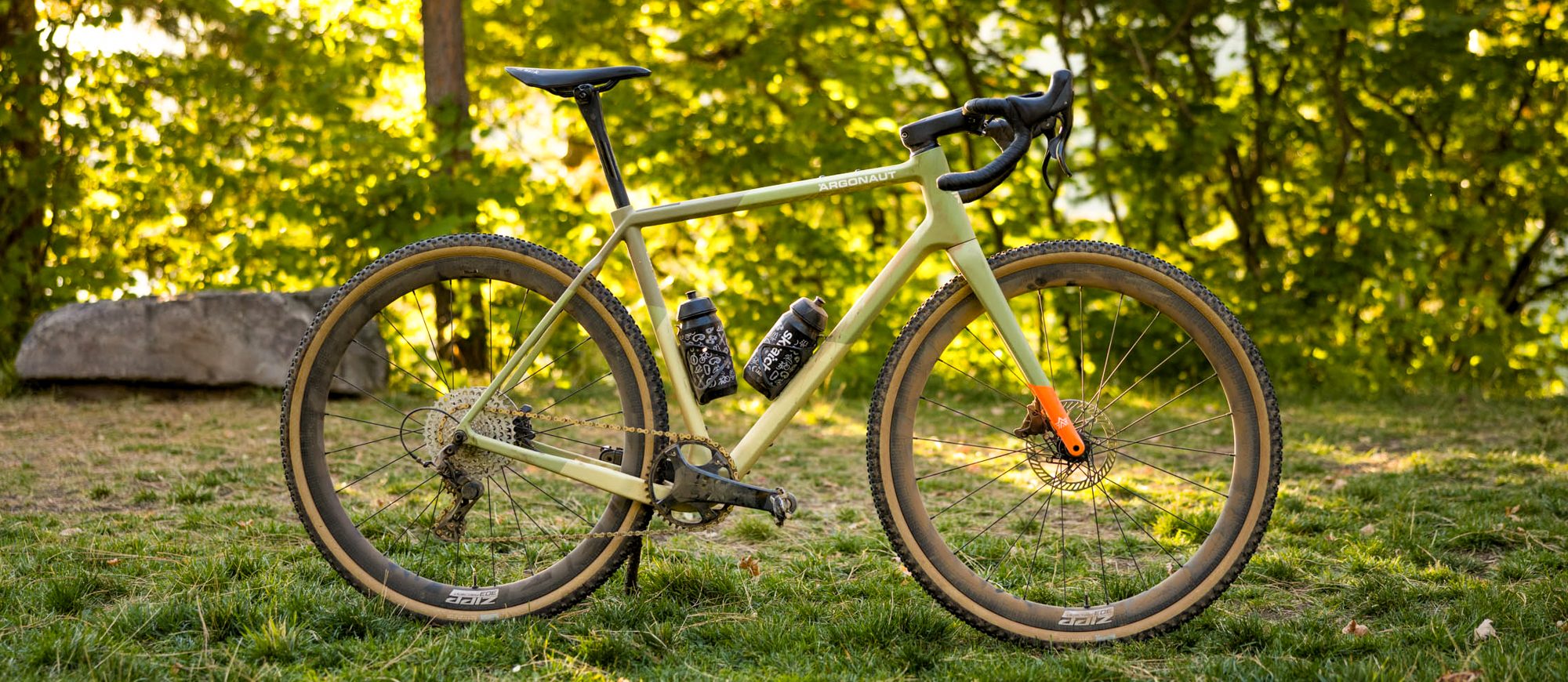
Specifications
Reasons to buy
Reasons to avoid
Argonaut's build-to-rider model means that if it doesn't have a mould for a frame that will fit you, it will construct a new one. It also matches the carbon lay-up to your power, weight and riding style. The strange thing is, its cost is competitive with off-the-shelf gravel bikes from the big brands.
Argonaut has achieved very short 415mm chainstays for agility but still retained 50mm tyre clearance. Really tight clearances have been used to do this, although that does mean that front derailleur or crank arm power meter pods aren't an option. The GR3 is light too, with our test bike weighing in at 7.6kg.
The head tube angle is an exceptionally slack 68.5 degrees, which leads to downhill stability and eliminates toe overlap, which in turn means you don't need to concentrate too hard to get to the bottom fast. In fact, the bike's descending confidence, along with the compliance that can only be offered from a bespoke carbon layup, allows it to really stand out against other gravel bikes.
With the frame being custom, it shouldn't come as a surprise that you can choose the exact components for your own build. If full custom isn't for you, then the GR3 is also available as an off-the-shelf frameset.
You can read more of our launch ride around Bend, Oregon, in our Argonaut GR3 first ride review.
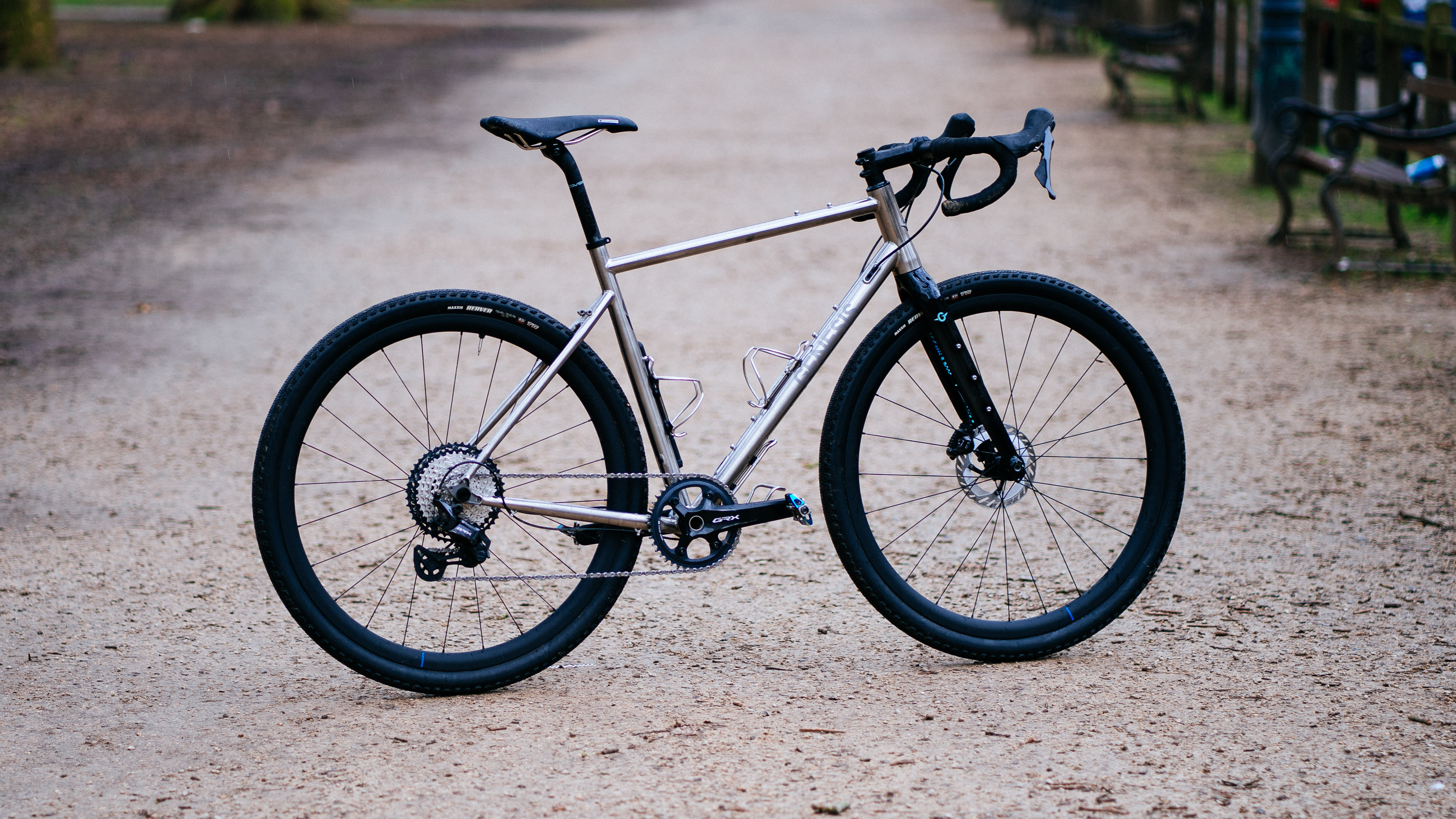
Specifications
Reasons to buy
Reasons to avoid
The Genesis Croix de Fer has been around since the rise of modern gravel riding and has seen several iterations over the years. It was never truly pitched as a gravel bike though, rather a one-bike solution that was equally aimed at commuters as it was touring, road riding and gravel. The latest 2025 Croix De Fer has been modernised and is now a proper gravel bike.
The Croix De Fer comes in seven steel build options, including two flat bar options, and it's available in steel, stainless steel with a carbon fork and titanium with a carbon fork.
Cyclingnews tester Will Jones spent some time riding the titanium version of the Genesis Croix De Fer and had only good things to say about its new gravel focus. Off-road, and particularly on fast and loose descents, the updates to the geometry give the bike a sure-footed and capable feel. The wider tyres help here for sure, but it being a little longer and a little slacker certainly has something to do with it. It still performs admirably on road and commuter duties, but the small compromises made here mean it's now considerably better off-road.
Check out our Genesis Croix de Fer Ti review to hear more about how the titanium frame rides.
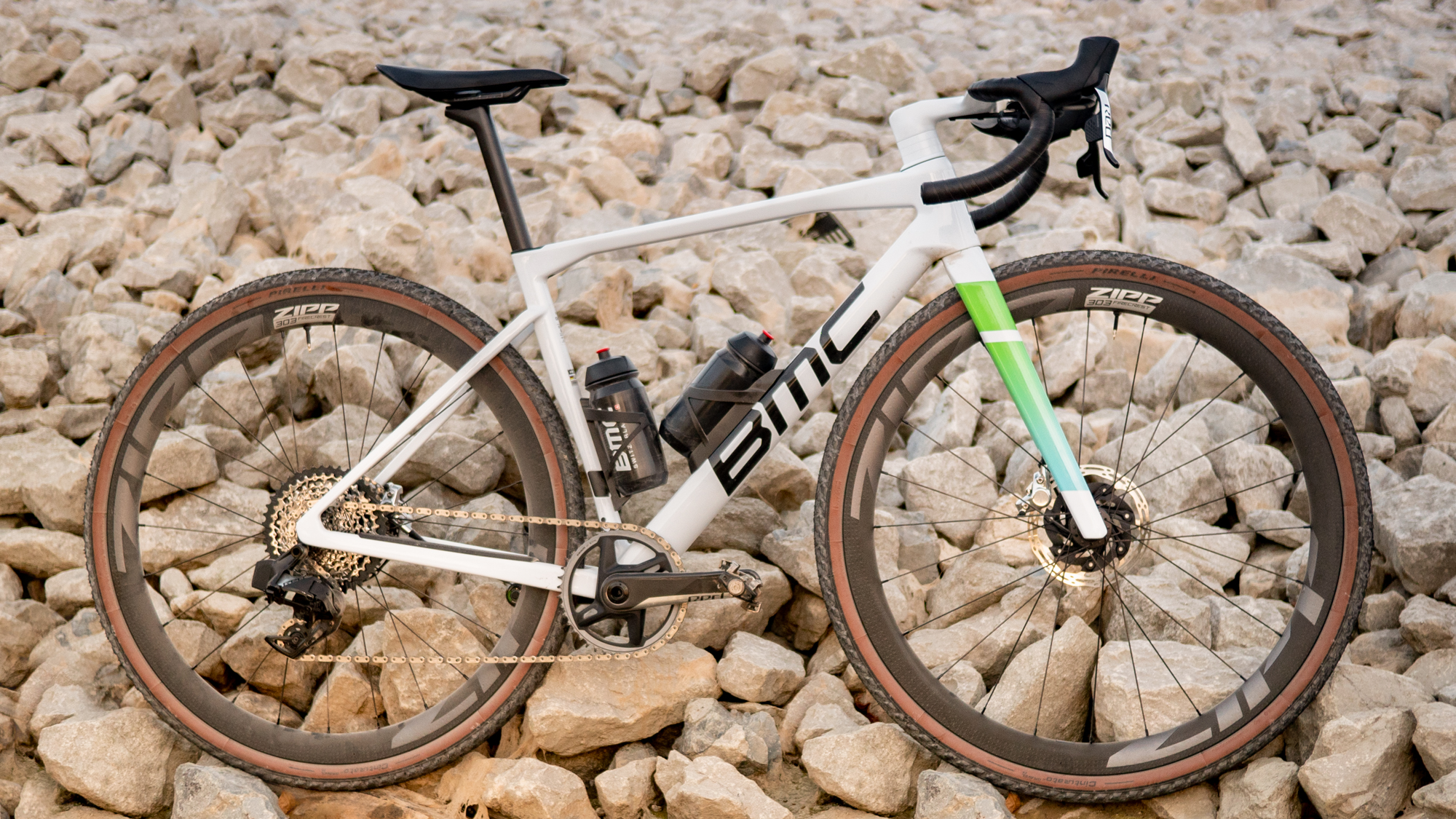
Specifications
Reasons to buy
Reasons to avoid
Pauline Ferrand-Prévot won the inaugural UCI Gravel World Championships on the BMC Kaius. It's that kind of bike.
Everything is aero. The one-piece bar/stem, for example, is only available in one width: 36cm wide at the tops - even narrower than the Trek Madone - and placing your arms closer for a more aero ride. The drops flare out to 42cm and BMC has countered any tendency for edgy handling with a large trail and bottom bracket drop. Although the Kaius has been around for a few years now, the geometry is still modern, progressive, gravel bike geometry.
Despite the racy credentials, the Kaius handles like a gravel bike on rough terrain and is comfortable enough for long ride days. It's expensive but not out of line with the best gravel race bikes from other brands.
Read our review for our experience racing the BMC Kaius 01 One.
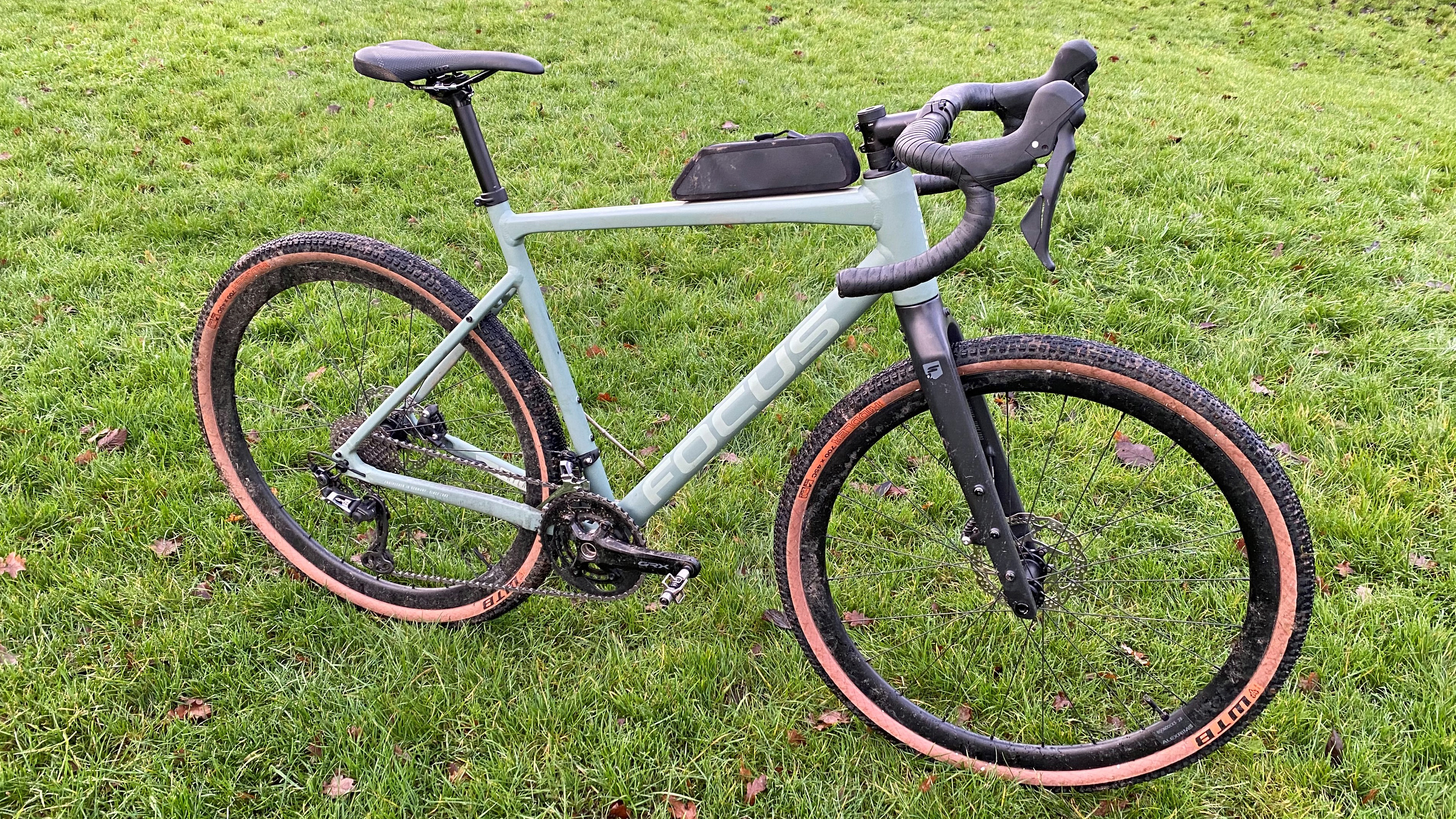
Specifications
Reasons to buy
Reasons to avoid
Focus was rather late to the gravel party when it launched its Atlas gravel bike, but being late can be fashionable, right?
We were one of the first to test the Focus Atlas 6.8 gravel bike prior to its release, and we found it to be tough, versatile and adaptable. These are all great qualities if you want to load up and escape the everyday for a while. The Atlas is definitely on the smooth-ride, easy-cruiser end of the gravel spectrum, which means it's not as light as some of its competitors, but it's robust enough to load up on luggage and take out for a long and exploratory ramble.
The alloy frame has a large, rectangular downtube with triple mounts for adjustable bottle cage positioning, while the seat tube features a plugged entry point for a dropper post, should you wish to install one.
The Atlas 6.8 comes equipped with 700c wheels but is also 650b compatible, and has clearance for up to 45mm tyres. One of the nice additional features is the top tube bag that comes with every bike as standard.
As the range's second-highest model, the 6.8 is kitted out with a mixture of Shimano GRX 600 and 800 drivetrain components, as well as Novatec tubeless-ready wheels and WTB Riddler tyres.
Have a read of our Focus Atlas 6.8 review if you're curious to know more.
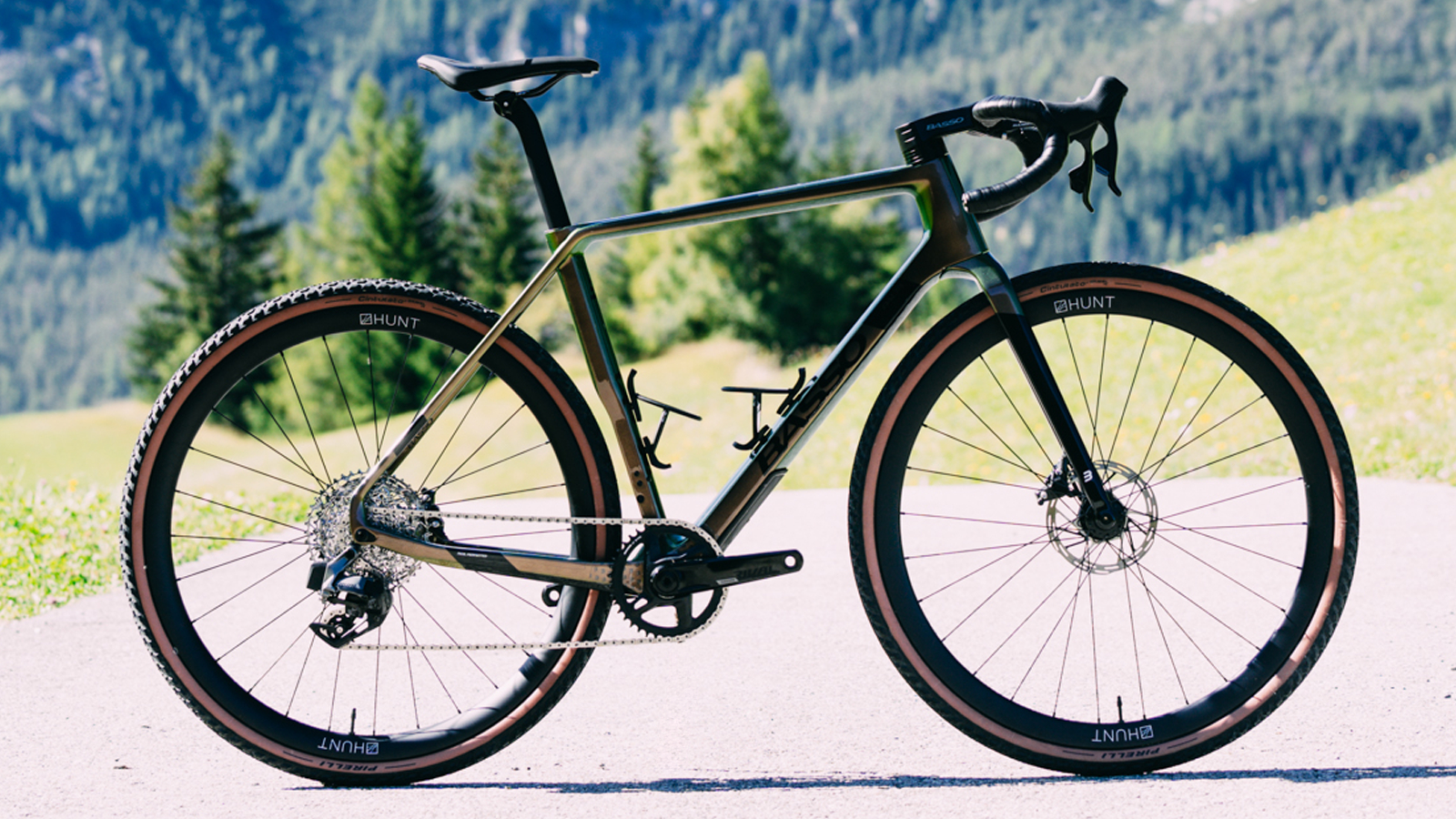
Specifications
Reasons to buy
Reasons to avoid
While versatility and exploration might be top of the requirement list for many gravel riders, Basso's overarching philosophy for the Palta is speed. In Basso’s eyes, speed makes everything better, stating that “adventure can be competitive, that performance doesn’t require a race number, that exploration is better with adrenaline and speed”.
The result is a gravel bike that encourages fast-paced riding and dispatches gravel and tarmac with the same feverish desire for speed. The agile nature and confident handling back up the velocity as well, negotiating rough trails with precision. What's most surprising is that despite its racy nature, the Palta II is surprisingly forgiving over bumpy terrain. It's not going to be as smooth as a gravel bike with an active suspension system like the Cannondale Topstone or BMC URS, yet there is enough forgiveness to help stave off fatigue on longer rides.
For more details, check our Basso Palta II first look.
Not seen what you're looking for?
We've also reviewed the Colnago C68 Gravel, Eddy Merckx Strasbourg, Specialized Diverge STR, Revel Rover, Guava Spot and Liv Devote if you want to read our views on a few other options.
How to choose the best gravel bike
- What type of gravel riding are you doing? Most bikes will perform well as all-rounders, although some have become more specialist. If you're racing, look for a bike with aero frame features and a performance-oriented riding position. For adventure riding, you will want a more relaxed riding position and features that promote comfort.
- What size tyres do you need? Tyres are a complicated subject, we recommend leaning towards bikes with wider (45mm plus) tyre clearance. However, if you're local gravel is very smooth, 40mm will be more than enough.
- Do you need suspension? Suspension comes in a range of different forms and aims to reduce vibrations going from the trail into the rider. Bigger tyres will add a lot of comfort, but if you need more vibration dampening, look for a gravel bike with front or rear suspension.
- What frame material should I choose? Carbon is lighter and can be designed to offer both better stiffness and comfort, but it's expensive. Metal is more durable, with alloy offering a reasonably lightweight and affordable option, while steel frames can give a classic springy ride feel.
- What gearing do I need? Most gravel bikes will come with a drivetrain that has a single chainring on the front, referred to as 1x (one-by). Gravel bikes aimed at flatter, faster riding will have a larger chainring. If you're tackling steep climbs, you will want a larger cassette to give you an easier gear.
- Do I need bikepacking mounts? If you want to go bikepacking, look for a bike that has mounting bosses on the fork, top tube and under the downtube.
Everything you need to know about the best gravel bikes
Gravel cycling is an incredibly popular branch of the cycling tree, with most brands offering at least one gravel model.
It's hard to know what the ideal gravel bike for you will be when there is such a dizzying array of options on the market, luckily we have learned a lot from testing the best gravel bikes and have some answers to the key questions, as well as a few questions you need to answer yourself honestly to get the most out of your new purchase.
As a starting point, decide on a budget. Ultimately, as always, this dictates everything. It's probably also a good idea to know what type of off-road riding you think you will be doing most and look for bikes that fit this bill in your research.
As an example, if you're looking for an aggressive, burly off-road bike to take on tough terrain, a fast, race bike with an aggressive riding position and narrow handlebars may not be the best option.
The converse is true: if you like to ride fast on less demanding gravel and want to be able to keep up a good pace on tarmac as well, you may want to look for a gravel bike that has narrower tyres, higher gearing and possibly aero features.
If you're not sure what you're looking for, we've got a guide to what a gravel bike is, which explains more about this popular style of bike.
Can I use a gravel bike for road cycling?
Any gravel bike can be ridden on the road, although some key differences between gravel bikes and road bikes should be considered. Gravel bikes will have lower gearing, which may limit your speed, and the stock knobbly tyres will roll more slowly on tarmac. That said, gravel tyres can be easily changed to slick road tyres, and unless you are road racing, you are unlikely to miss the top-end speed.
The main advantage of a gravel bike vs a road bike is the ability to get away from traffic and take to untarmacked paths, which opens up a lot more riding options. They are just another way of having a lot of fun cycling and exploring new terrain on your own or with friends in places a road bike couldn't necessarily take you. It also means that you may find novel ways to link roads together and devise new routes. If you're finding your road riding a bit samey, a gravel bike can really spice things up, without losing a lot of on-road ability.
Can I use my road bike on gravel?
The trend towards wider rubber for road bikes has opened up a new debate
We think most people would be in agreement that once the trail starts to feature rocks, then a road bike really isn't a sensible choice, from both an enjoyment and a safety standpoint.
However, there has been a trend towards wider tyres in almost all cycling disciplines in recent years, and road bikes can now regularly be seen sporting rubber with widths greater than 30mm. Given that cyclocross bikes are limited to a maximum of 33mm for racing, you can be forgiven for wondering if you can use your road bike off the tarmac.
If you're only venturing off the blacktop on occasion and not going over anything more than nicely graded trails, your road bike may be absolutely fine. That being said, even the best road bike tyres aren't designed to be ridden over dirt, gravel, or through mud, so remember to use a bit of common sense. Many road bikes now have the clearance to fit the best gravel tyres in narrower widths, adding grip off-road.
Conversely, many of the gravel bikes on this list from the racy end of the spectrum will perform admirably on the tarmac with a set of slick road bike tyres or even a set of road wheels swapped in.
What type of gravel do you want to ride?
Are you collecting QOMs over buttery smooth gravel roads, or are you dodging rocks and roots while taking some lovely photos?
Being honest with yourself about the type of riding you intend to do is paramount. Buying a race bike when you really want to go on an expedition could be a costly and uncomfortable mistake.
If speed matters, and you're targeting gravel races and events, then a pure gravel race bike is likely what you're after. Eschewing all unnecessary add-ons, these will prioritise speed and will have geometry more suited to less technical riding. They'll also likely have some aero flourishes, but you can't necessarily expect to be able to fit mudguards or luggage.
If you want to go far, over several days or want to explore some more technical trails at your own pace, then look for something slacker to inspire confidence when the going gets steep, and with the capacity to carry luggage.
Gravel-specific suspension systems and dropper posts appear to be here to stay and aren't limited to either end of the extended gravel bike universe, so it's your choice if you want some spring in your step.
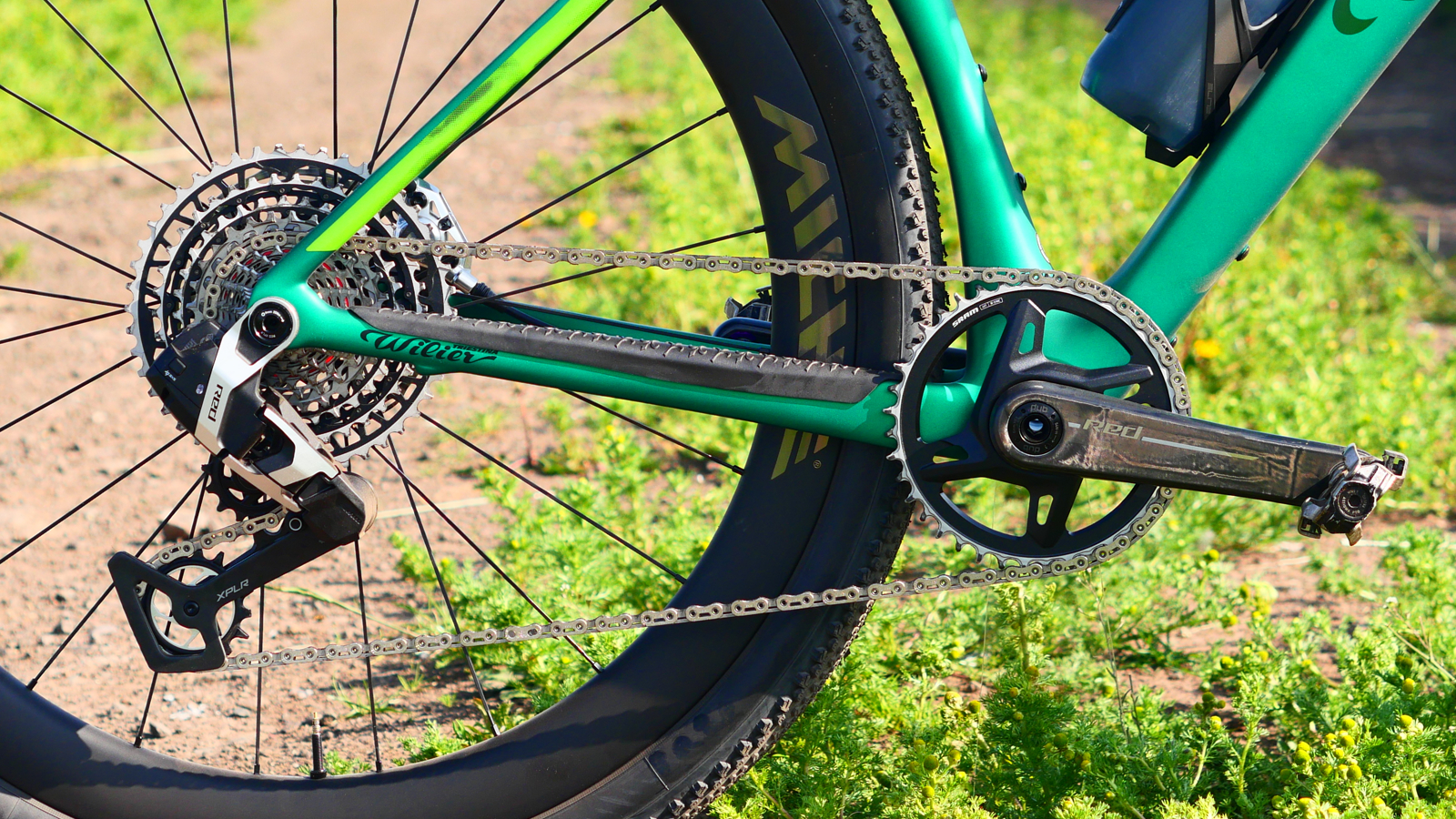
What gearing should I look for?
Riding off-road is often slower than on tarmac and there can be steeper inclines. On a road, you might power up these out of the saddle, but on loose surfaces, you usually need to sit in and spin up to avoid wheel slippage.
That's led to many newer gravel bikes being specced with subcompact groupsets. In place of the 50/34t chainrings usually found on the best endurance road bikes, a subcompact groupset typically offers 48/32t or 46/30t ratios, or sometimes even lower.
The smaller chainrings are usually combined with wider range cassettes that typically go up to 34 or 36 teeth. This, in turn, gives a sub-1:1 lowest gear ratio that can really help with steep seated climbs.
The flip side is that the highest ratios are lower, so it's easier to spin out on faster road or downhill gravel sections.
Many gravel bikes feature single chainring (aka 1x) groupsets. These reduce complexity and weight over a double chainset. There's less to go wrong or get clogged with mud, and the single chainring is designed to improve chain retention.
A 1x groupset is usually paired with a wide range cassette, with 40 or more teeth on the largest sprocket. This gives a similar gear range to a double chainring set-up, although the jumps between ratios may be a little larger. It needs a rear derailleur designed specifically to work with the cassette, and which usually includes a clutch.
The most extreme 1x configurations pair a road chainset and shifters with an MTB rear derailleur in a so-called mullet build. This can give a really wide range of gears, which includes very low ratios, which can be good for bikepacking or riding the toughest terrain.
The latest 1x 12-speed groupsets from SRAM and Shimano include options with 50 or more teeth, for very wide gear spreads without the mullet.
What wheel size do I need?
700c, 650b or even 26"?
Beyond the initial debate over what constitutes a gravel bike, the most appropriate wheel size is perhaps the most hotly debated topic. 700c was initially all that was on offer, but now a resurgence in 650b, an old touring standard, has upset the apple cart somewhat.
650b rims have a smaller diameter than 700c, and can therefore fit a higher volume tyre within the same diameter (so the theory goes). In simple terms, a 650b rim and a larger tyre have essentially the same diameter as a 700c rim with a smaller tyre. As a rule of thumb, you're more likely to find 700c on those bikes designed for racing, while 650b tends to feature on bikes aimed at tackling the really rough stuff and bikepacking. There is significant crossover, however, with many framesets able to take either.
Some manufacturers are thankfully also taking into account the needs of smaller riders. Constraints in frame geometry mean extra small frames can sometimes come with 650b wheels or even 26", in contrast to the rest of the size range, to keep handling characteristics consistent between bike sizes.
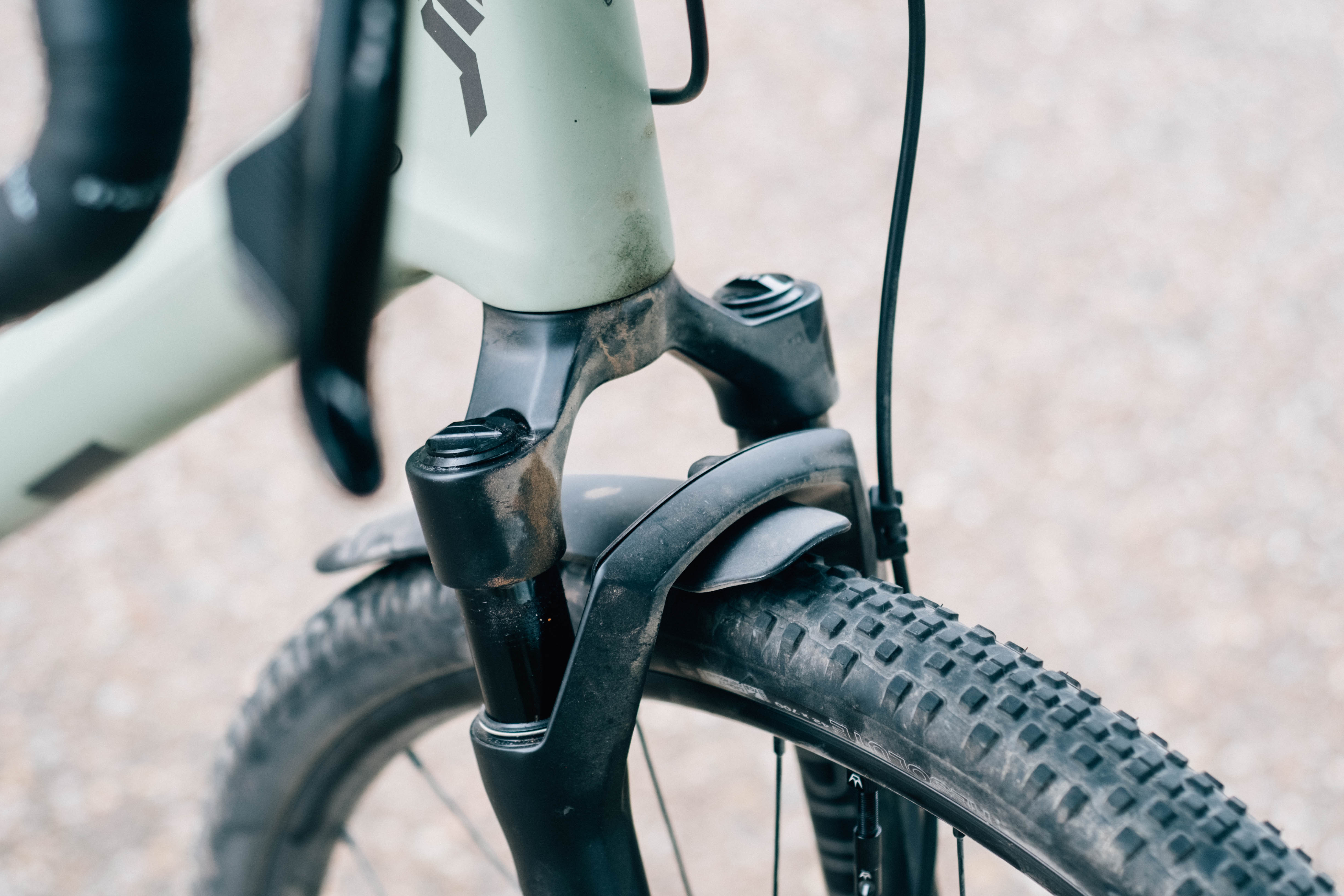
What extras do I need?
Beyond the set menu of frame, wheels and groupset there are a host of bonus features to look for.
Are you a thirsty person? Maybe an extra set of bottle bosses on the downtube will suit you. Do you want to carry absolutely everything? Rack mounts for panniers, or triple bosses for high-capacity cargo cages on your fork legs, will probably fit the bill.
Gravel is a relatively new genre, and as such, there has been a great proliferation of new tech, innovations and differing design philosophies in a relatively short space of time. Whether you're after suspension, internally geared hubs, enormous tyres or something that can double up as a commuter, then there will likely be a bike for you out there.
Dropper seatposts are another feature that's making its way onto gravel bikes and may be specced on some builds. A dropper allows you to lower the saddle, so that it's out of the way if you're tackling steep terrain, allowing you to push your weight back more easily and lower your centre of mass for greater stability.
Is a gravel bike the same as a cyclo-cross bike?
They sometimes look similar, but what makes them different?
A staple of any decent comments section is someone angrily insisting that a gravel bike is exactly the same as a cyclo-cross bike. Sure, they share some similarities, but now, especially following recent evolution in gravel bikes, they are definitely different beasts.
While the cyclo-cross vs gravel bike conundrum certainly coaxes strong opinions from some, it simply boils down to differences in use case. A CX bike is designed to be raced for a maximum of one hour around extremely technical courses. Comfort isn't as high on the priority list, and a super wide gear range isn't overly necessary as, beyond a certain gradient, riders shoulder their bikes and run instead. The geometry is designed for sharp handling to navigate tricky courses rather than stability for all-day riding.
Gravel bikes, in contrast, are designed with longer days in the saddle in mind. Multi-day epics aren't out of the ordinary, and so frame design and componentry choices are tailored for greater stability and to account for tired legs, protracted climbs and moderate loads.
While a CX bike can certainly be used for gravel riding, in the same way a trail bike can be ridden on an enduro course, it's not the best tool for the job. If you do need something for a filthy hour in ankle-deep mud on a freezing Sunday though, our roundup of the best cyclo-cross bikes will help you cut through the slop with ease.
How do we test the best gravel bikes?
Here at Cyclingnews, we all ride varying definitions of 'gravel', and our tech team will always have at least one gravel bike in for testing.
Our everyday gravel riding is done aboard whatever test bike we have in at the time, but in addition, we'll put each bike through a set of semi-repeatable tests. For example, we each have set routes that all bikes will be tested on, which will incorporate all types of gravel terrain, from road to basically-mountain-bike trails, up steep climbs and down the other side, with rocks, roots and more. This is to give each bike a thorough shakedown on all terrain that eventual buyers might face.
We can't control the weather, so that's why I say 'semi-repeatable', as we do have to be careful when comparing bikes ridden months apart, but with enough riding on each, we're able to tease out the differences, the pros and cons, and ultimately whether a bike is among the best gravel bikes and thus, worthy of inclusion on this list.
In addition, where possible, we'll get the team together to ride similar bikes together, back-to-back testing them, sharing notes, and group-testing gravel bikes where we feel there's value in doing so.
Read our guide to how we test for more details on our review team and our pledge to readers.
The latest race content, interviews, features, reviews and expert buying guides, direct to your inbox!
Paul has been on two wheels since he was in his teens and he's spent much of the time since writing about bikes and the associated tech. He's a road cyclist at heart but his adventurous curiosity means Paul has been riding gravel since well before it was cool, adapting his cyclo-cross bike to ride all-day off-road epics and putting road kit to the ultimate test along the way. Paul has contributed to Cyclingnews' tech coverage for a few years, helping to maintain the freshness of our buying guides and deals content, as well as writing a number of our voucher code pages.
- Josh CroxtonAssociate Editor (Tech)
- Will JonesSenior Tech Writer
- Graham Cottingham
- Tom WieckowskiTech writer
